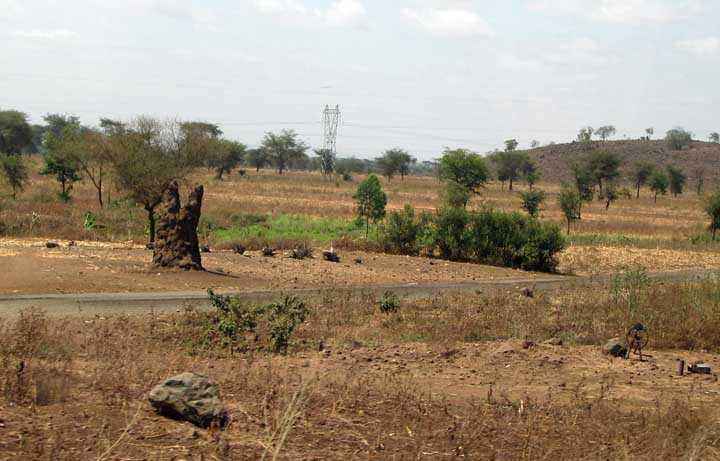
Tanzania
We arrive in Tanzania after the harrowing single engine flight to Kilimanjaro Airport. We're greeted by by guide Samuel Pallangyo and get ready for a ride to our initial stop. None of knew exactly what to expect in Tanzania, I think. Jackie and I were under the impression that we would find this country a bit more poor and backward than Kenya. I think we quickly discovered our expectations were incorrect.
First, and at this point in the trip this was paramount - Tanzania had great, smooth, well maintained roads! Second, there was electricity everywhere. And as for poor - of course Tanzania is poor; it also has 35% unemployment. The people here, for the most part, did not wear western clothes - one almost thought them in costume, until one catches on that this is everyday dress.
One quickly sees the change in housing. Here there are vastly more small villages, rather than small towns. The homes are more of the straw hut variety than brick, tin or cinderblock. The influence of Samburu and Maasai are clearly evident. This influence is seen in dress, behavior and living conditions.
If I had to describe Tanzania in one word, that word would be dry. Dry, dry, dry! In Kenya we saw water but in numerous streams and rivers - always dirty and cloudy,. Here in Tanzania, the few streams appeared to be clearer, but with people collecting water in every imaginable container, people washing clothes, and animal drinking all at the same place, at the same time. Out in the plains, what water we saw was found in large fairly shallow depressions , maybe a acre or two, evidently dig to collect water during the rainy season. The vast majority of these places were totally dry. A couple had small pools of water less than 50 feet in diameter. Only one we saw had a substantial amount of water and it was literally surrounded by cattle and goats. The result is that every where one travels, one sees people, bikes, oxen, mules, carts and busses carrying water containers.
Dust is a constant companion. It turns everything you wear, hats, shoes, scarves one or another shade of red. Hair got thick with dust. Riding with the top up in our vehicles causes dry throats and constantly blinking eyes. The back window fell out of our vehicle at one point. We didn't know it had until the van filled with a dust fog and we could hardly breath.
Yet, was it worthwhile and would we go back? Absolutely !!!
Some of the dry plains, termite hills and volcanic rocks

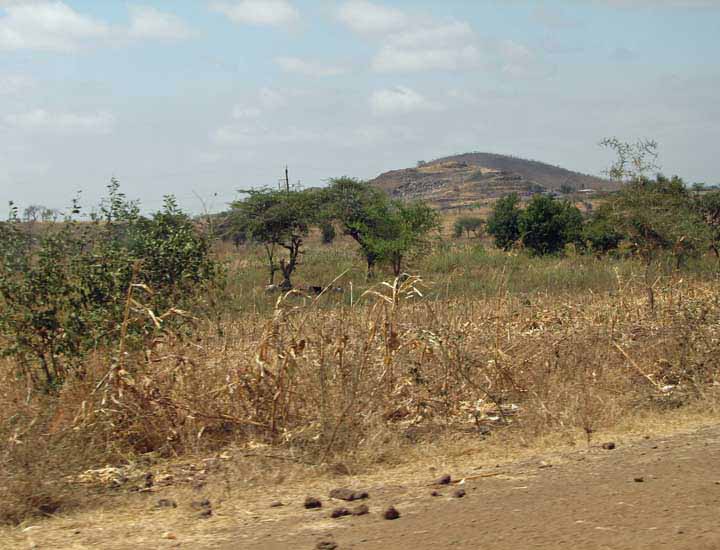
The commercial crops were corn, coffee, bananas,
and unbelievably - rice
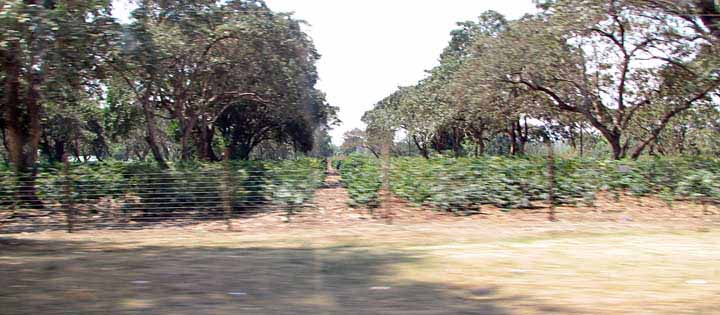
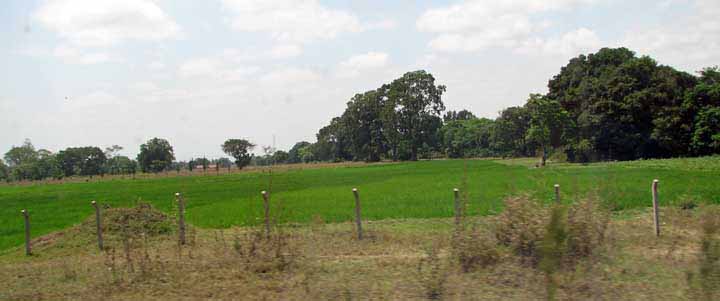
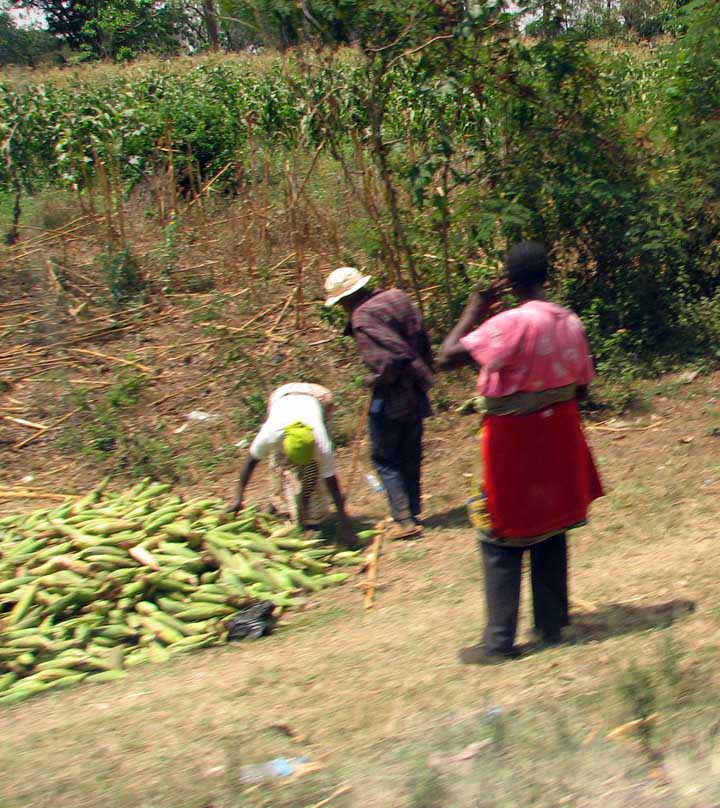
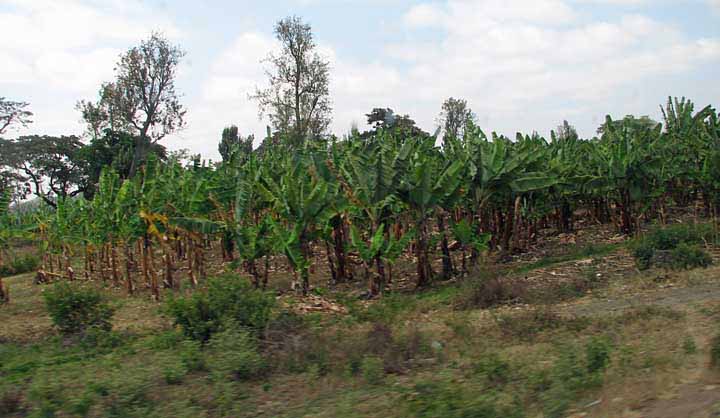
The towns were crowded and had roadside stands on the main road. The shops were somewhat ramshackle.
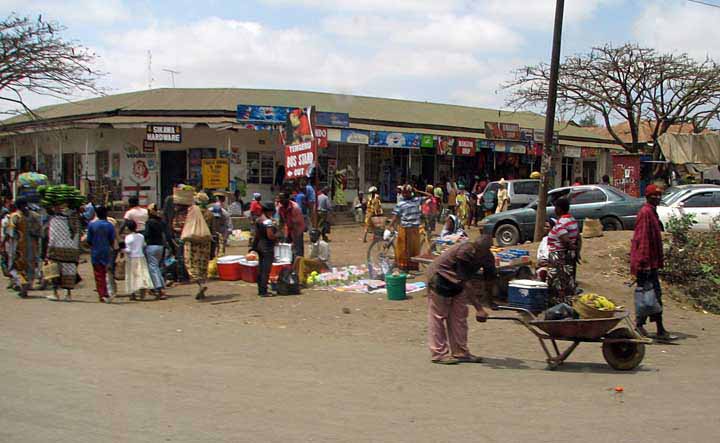
The single large town we passed trough was very crowded and the traffic was completely snarled. All type of vehicles, carts, bikes and people carrying loads were in the streets. Samuel tried several times to avoid traffic jam by taking round about streets he knew, but I'm uncertain how much time we actually saved. I will admit the amount of horns blasting was much, much less than China, Russia, Baltimore or Washington DC.
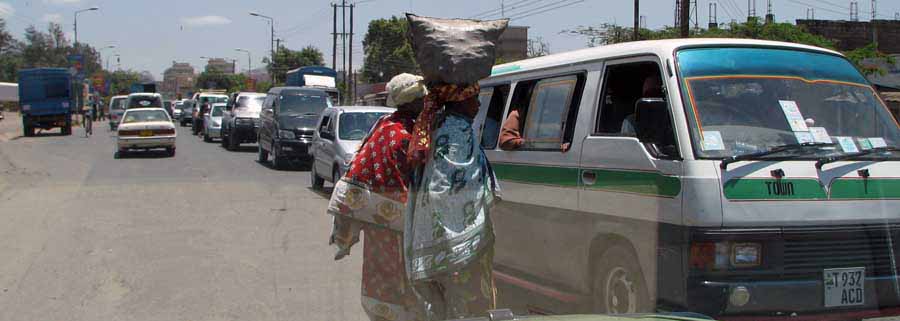
Yep, thanks to British colonialism, they drive on the wrong side of the road!
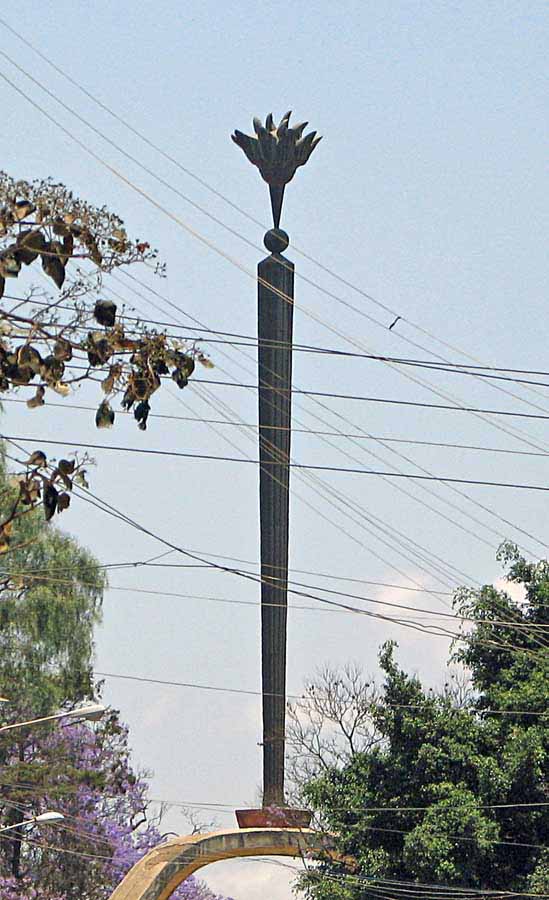
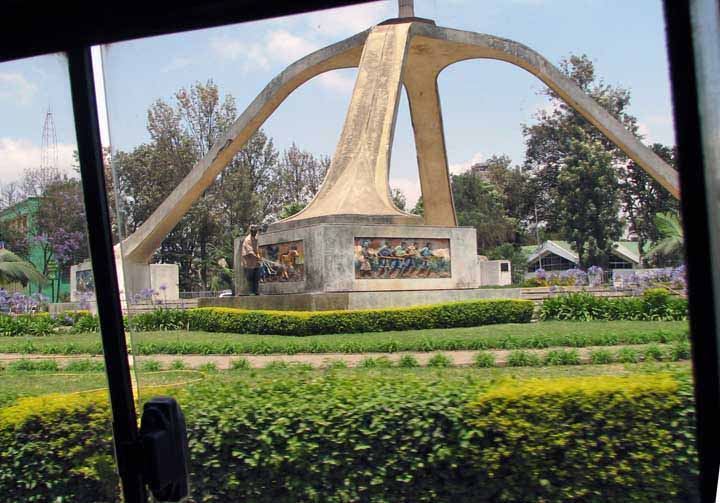
A Peace Monument - a lower and an upper shot - couldn't get the whole thing in one picture
Out in the dry, dry countryside
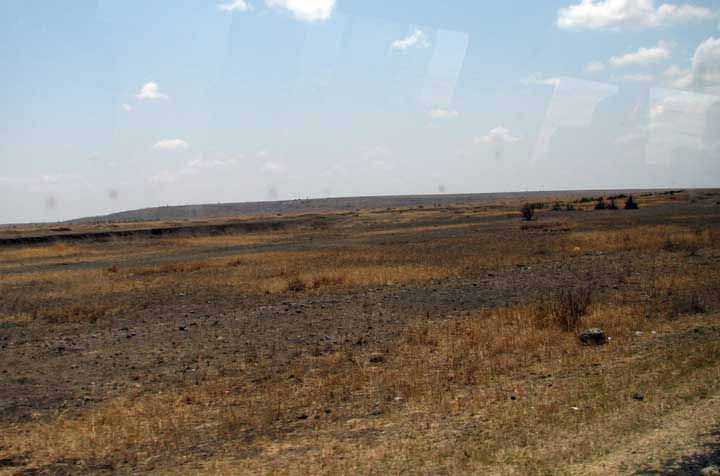
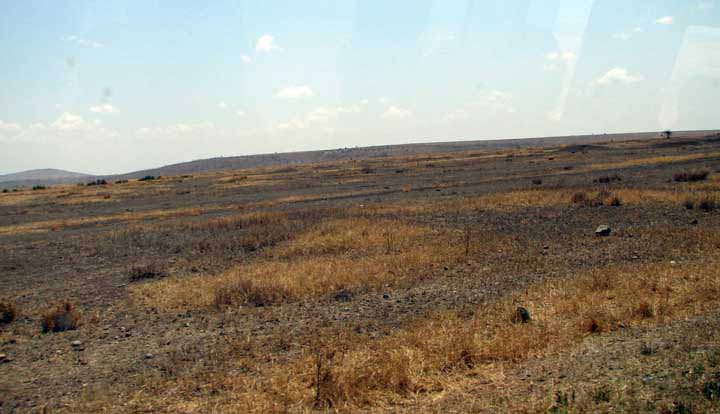
One of those dry water holding holes; women trying to wash clothes
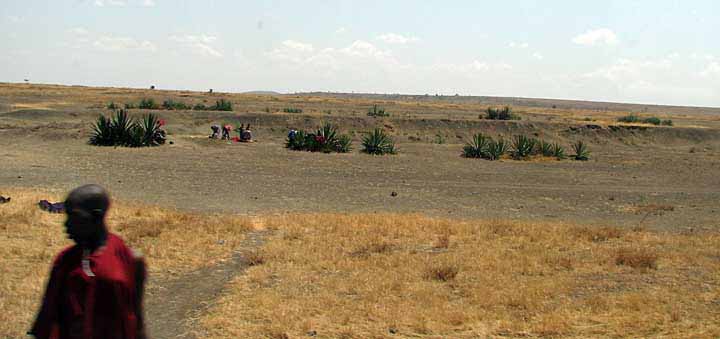
Herds of cattle, straw huts and dry, rocky fields
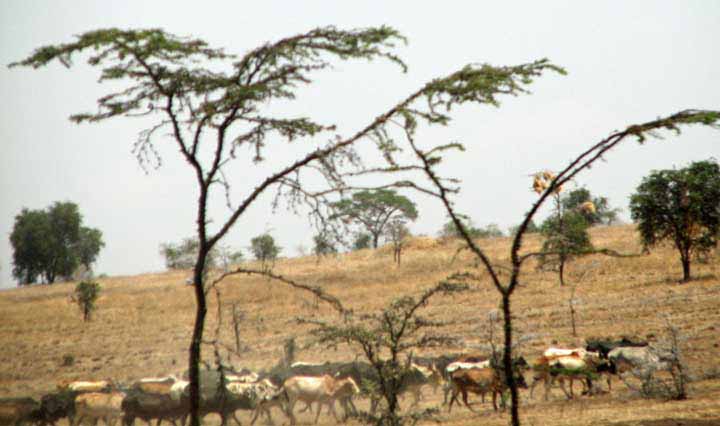
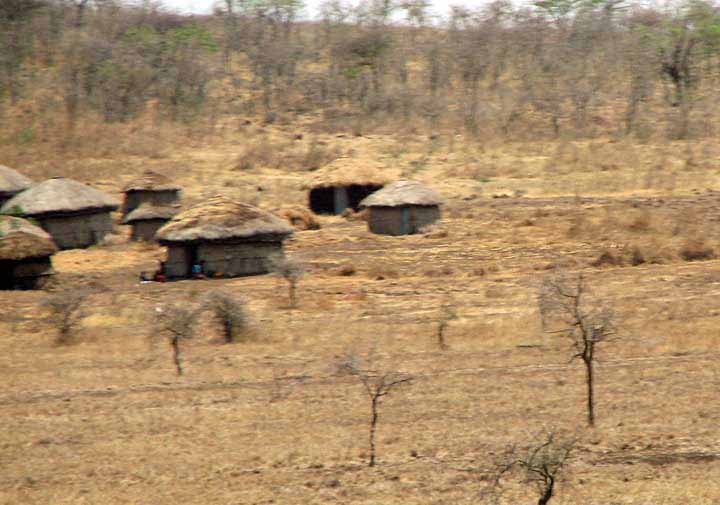
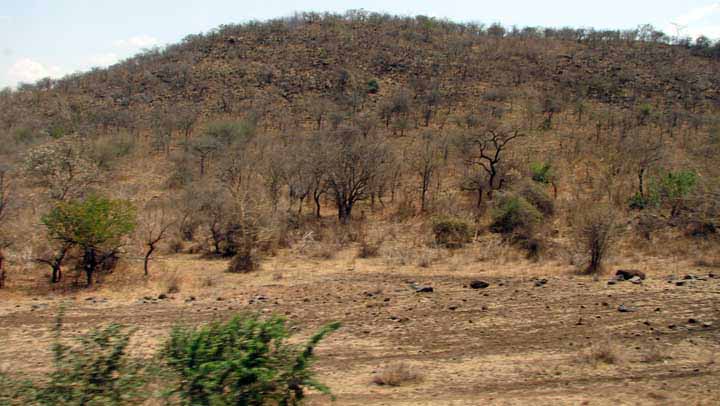
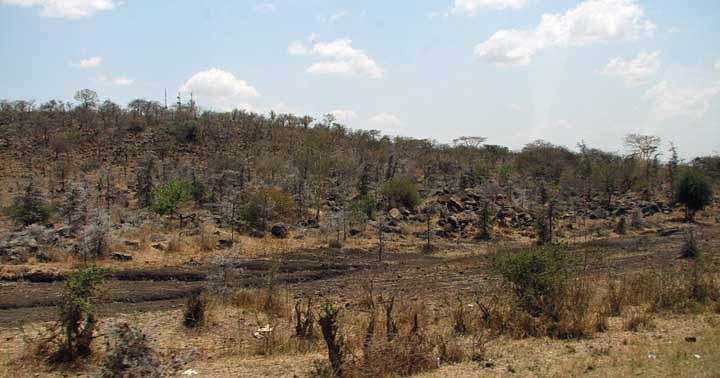
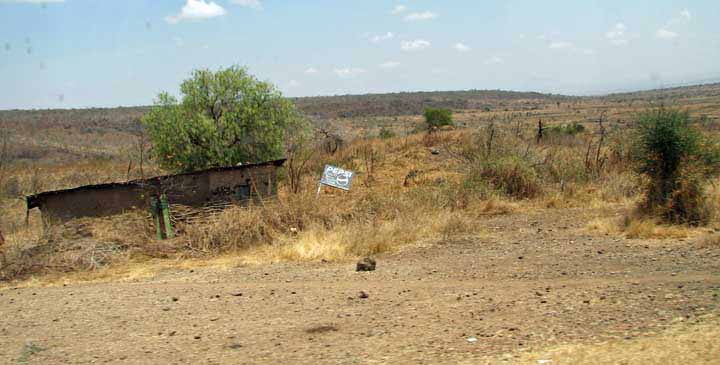
Small villages have market days where virtually anything may be sold, sold, bartered
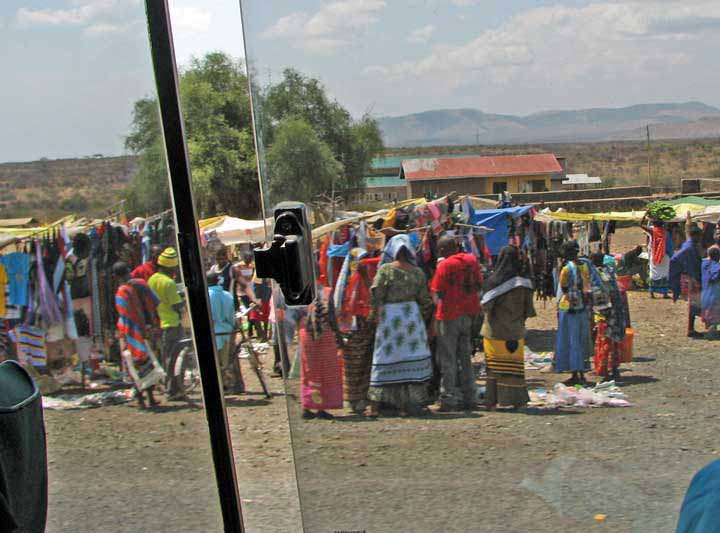
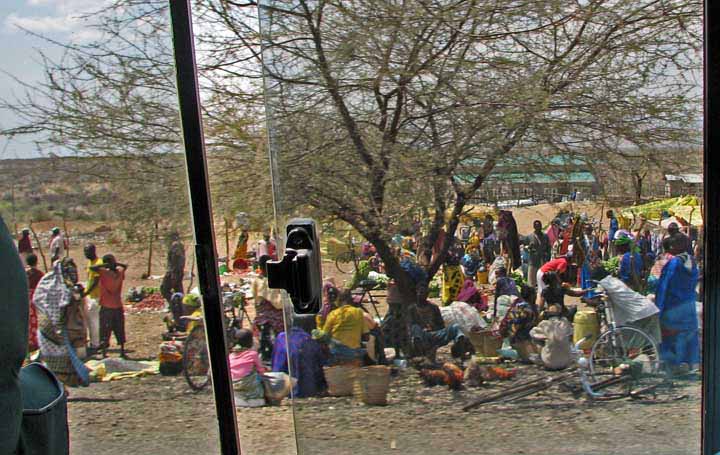
The huts made of sticks, straw, thatch, mud and cow manure.
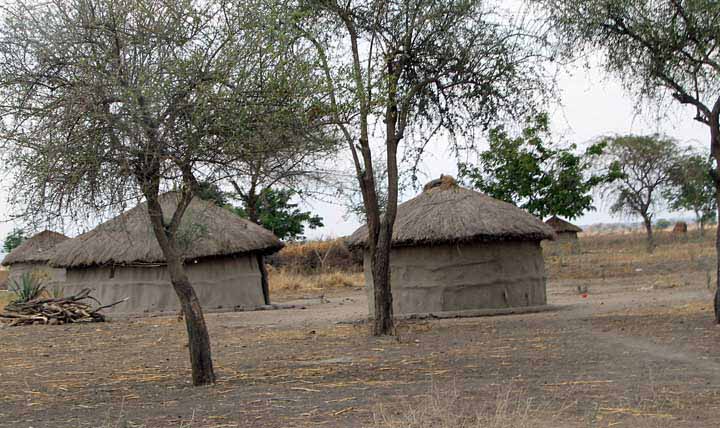
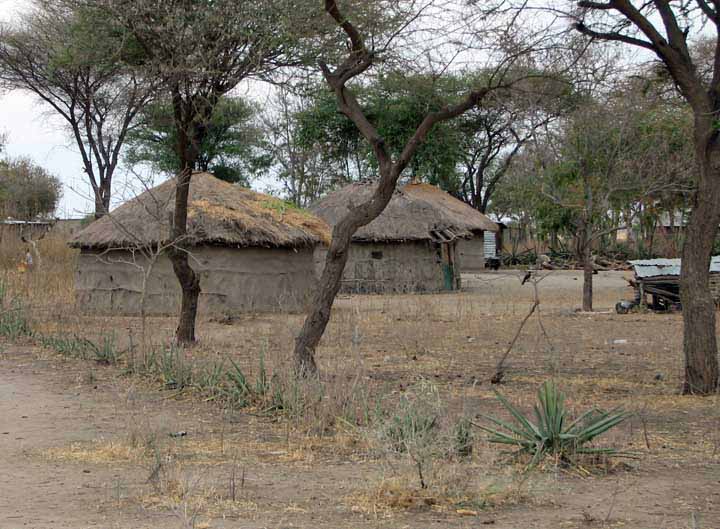
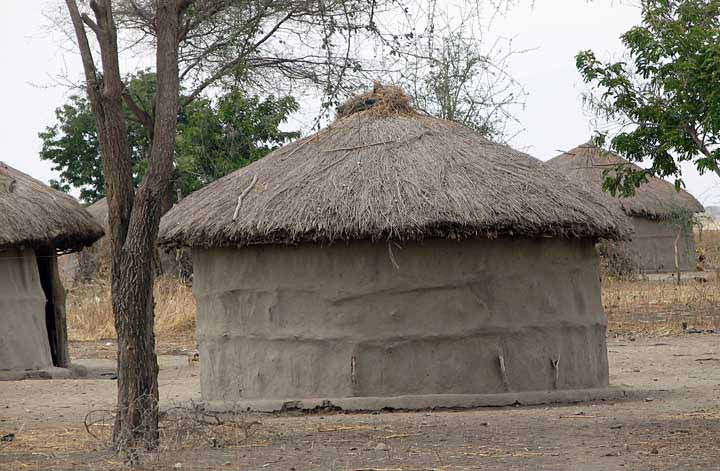
Yams, rice and bananas
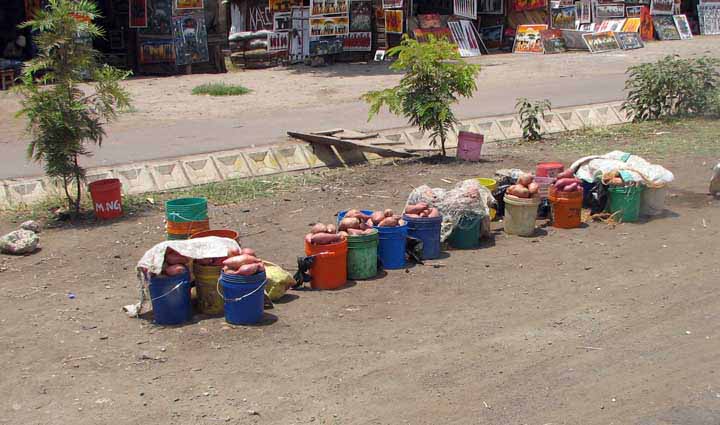
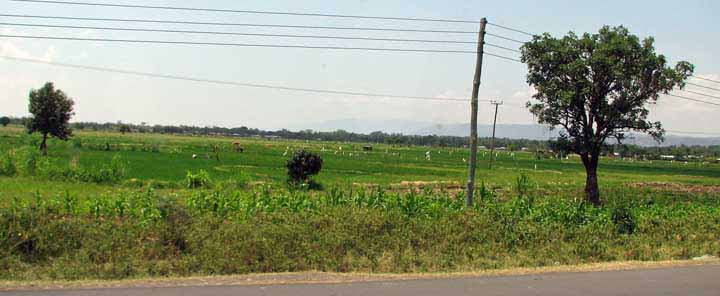
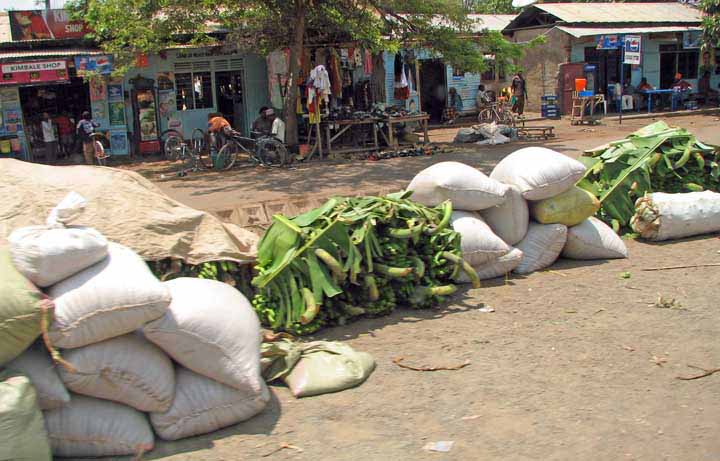
Poor villages
I think this picture is the one that made me the saddest the entire trip. This is the ONLY child I ever saw playing! Of course, as we passed schools, occasionally I saw some outdoor activities, but when I saw individual or small groups of kids, they were occupied in anything but play.
I hope he continues to have a reason to smile.
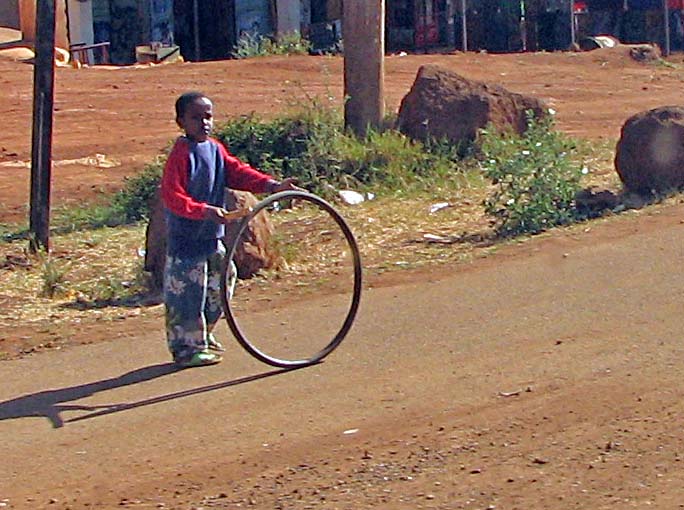
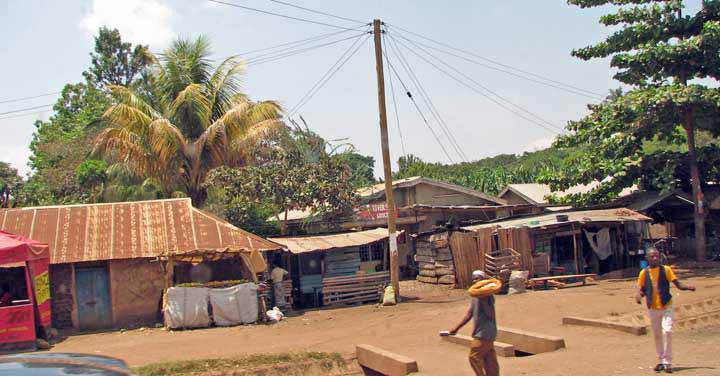
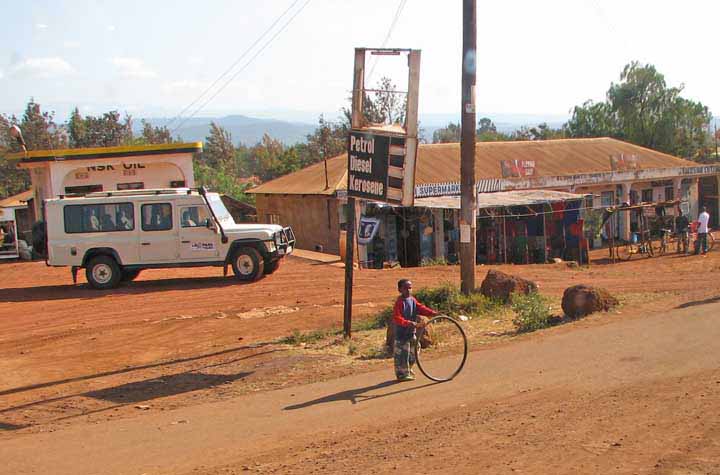
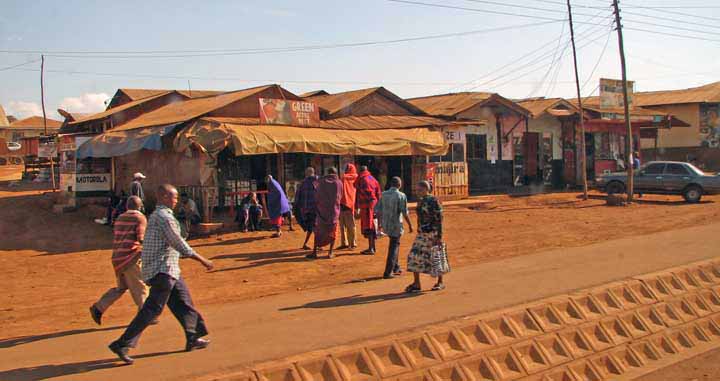
Oh, but the roads were a joy, after riding in Kenya!
Samuel simply would not believe our tales of Kenya roads! He thought it impossible for them to be so poor.
Although the "road signs" are more often rocks - painted or not, the roads were paved!
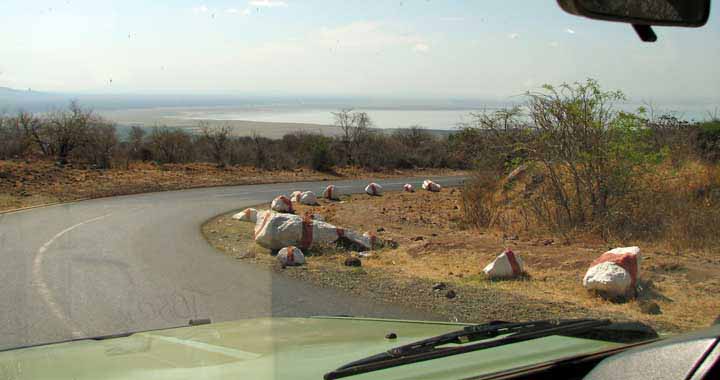
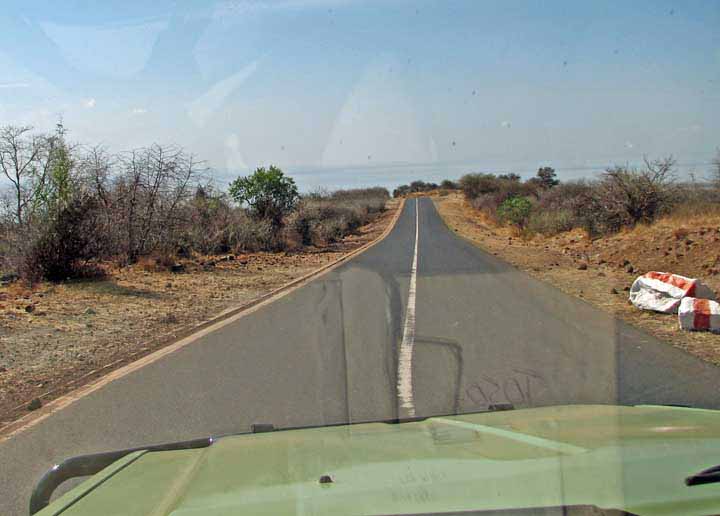
They even had guard rails!
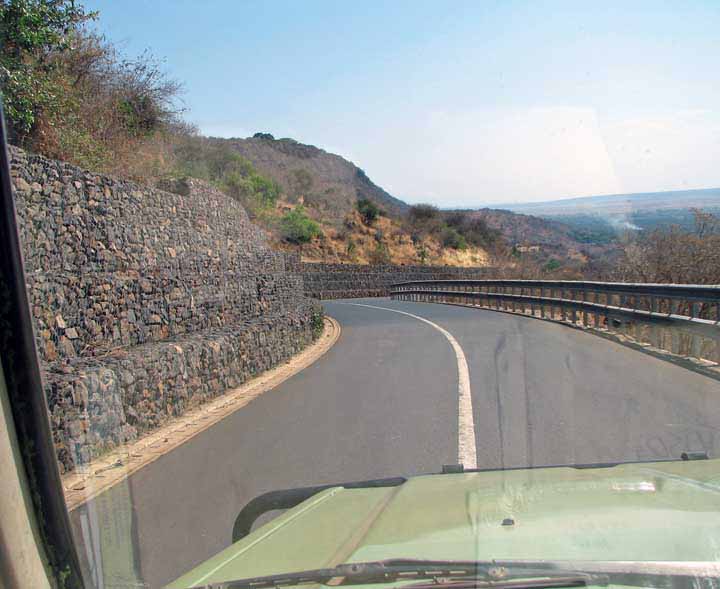
These concrete blocks mark speed bumps. There were two types: 1- an actual bump, maybe a foot or more high and maybe six feet wide. You did not just drive over them, you slowed to a stop and gently went forward over them. 2- A depression in the road. Again maybe a foot or more deep, and six to 10 feet long. Again, you do not just drive over them. Slow to almost a stop! At the majority of speed bumps, there were roadside commerce. All towns had speed bumps, one or more, wherever the central market and store areas were.
A depression road hump
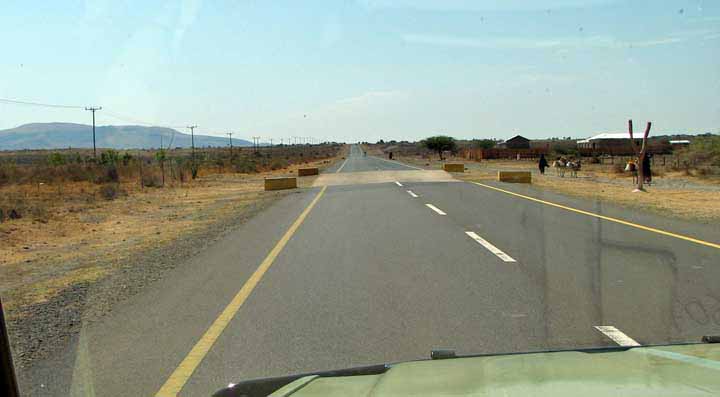
A built up road hump.

And in Tanzania, you do not make your way around the roads on the shoulder.
This volcanic rock will make short work of or tires.
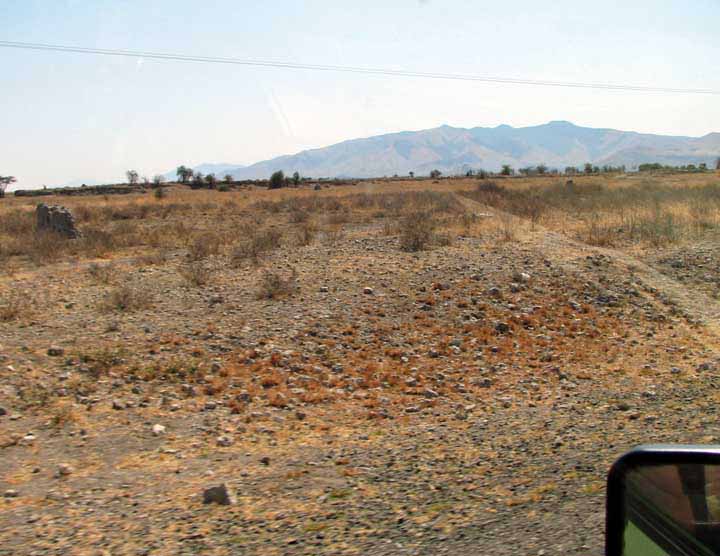
And what do you see sharing the road with your vehicle? In addition to a variety of tourist vehicles, a smaller number of privately owed cars, there are busses, vans and a wide variety of alternative methods of carrying materials.
Again, remember these are pictures from a moving vehicle,
and often I was too late to get a good shot - I saw the
object to photograph and couldn't get a shot quickly enough.
Enough excuses for terrible pictures?
This man was carrying a huge load of corn stocks on his bike.
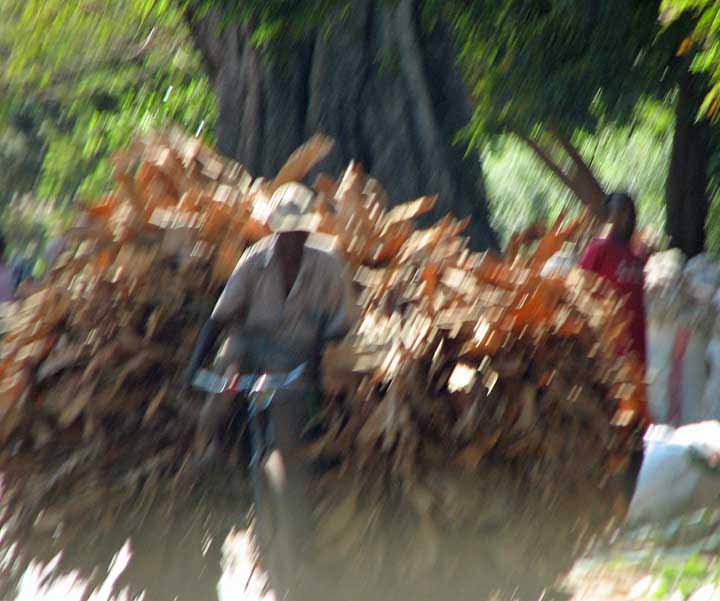
These guys are carrying heavy loads of bananas
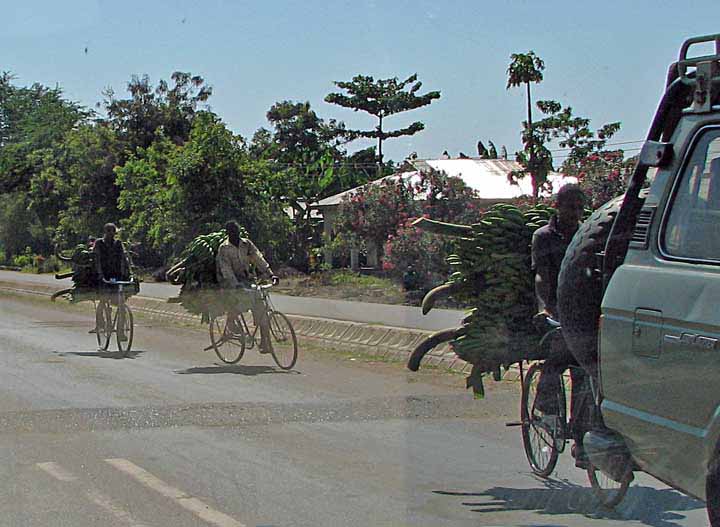
We saw this type of cab only in a small section of Tanzania - not in the cities or large towns
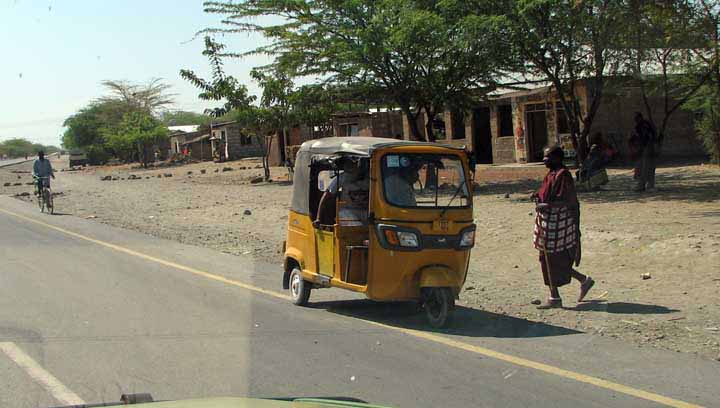
Sheet metal being pulled on a cart. We saw both rebar, lumber and metal
so large and heavy the either two men were pulling , or one pulled and
one carried the rear of the load from behind.
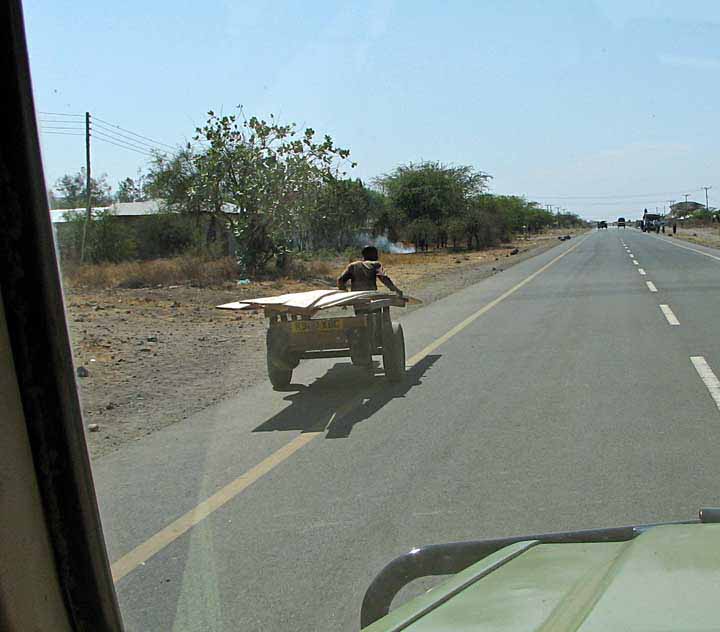
How much straw and/ corn could you carry on your cart or bike?
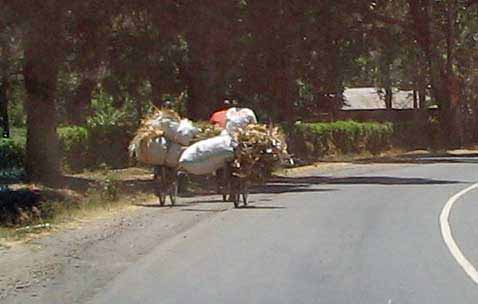
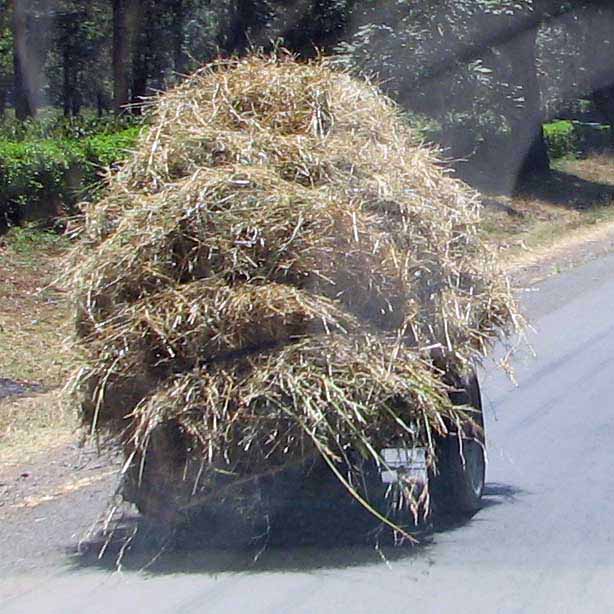
How many mattresses?
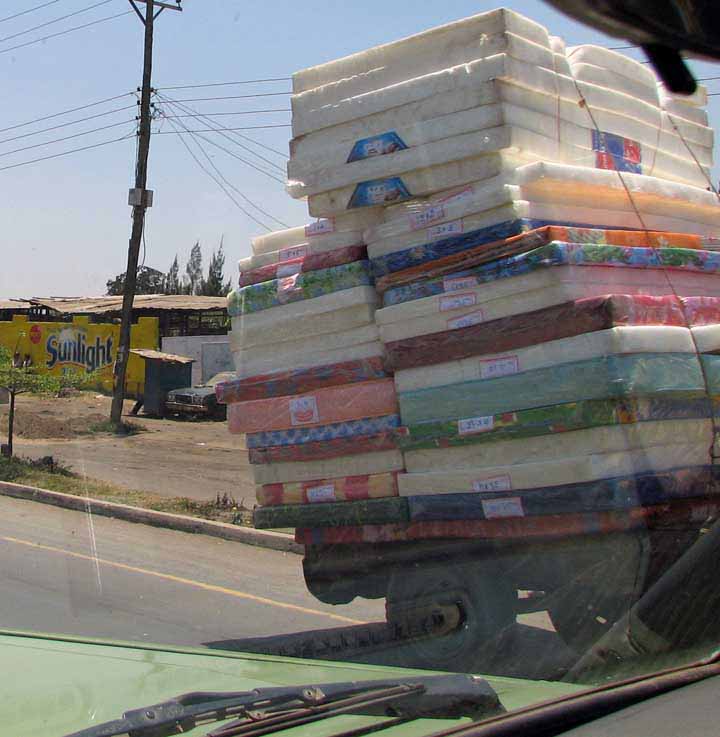
Heavy enough load to have one pull and two push
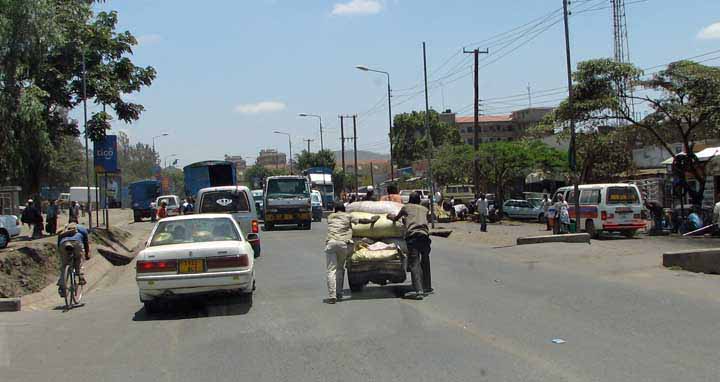
And there's always the opportunity for a short conversation. Ignore the backed up traffic!

Termite hills and dry fields
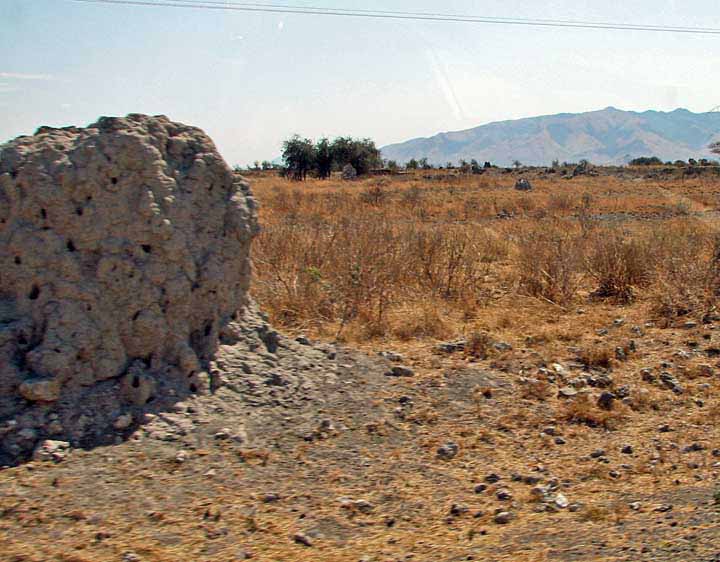
We saw this "dust devil" from about two miles away. It was larger before I got the shot.
Dry winds, heat and even dryer dust
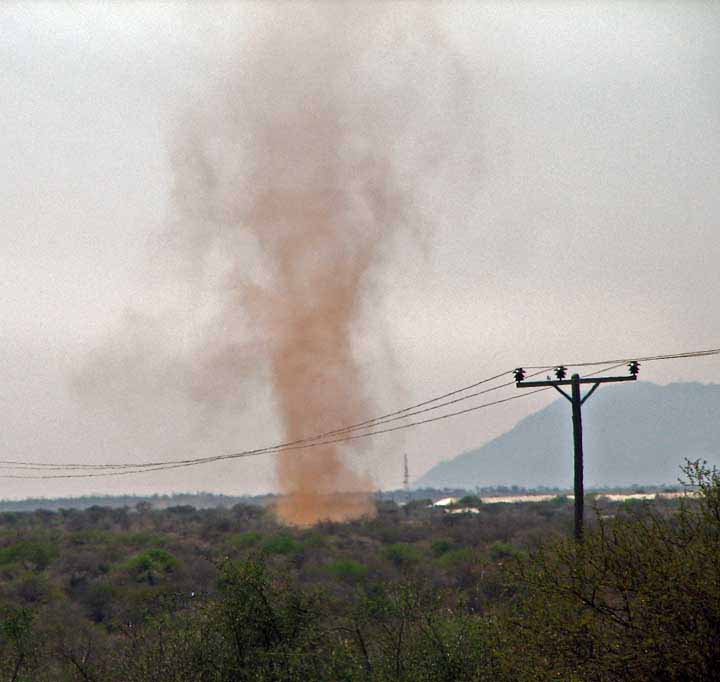
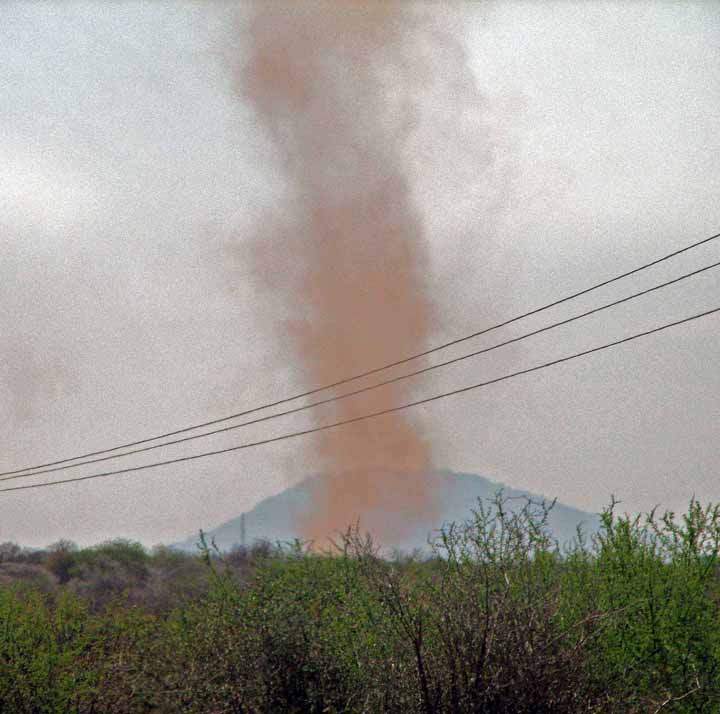
I had seen "things" for lack of a better word, in the trees as we drove down the road. Not everywhere, but wherever they were, there were always several. When I asked Samuel what they were, he told us they were bee hives.
This got Pam excited, as she is our resident bee keeper - she had started a hive just last year.
We had to stop, walk over and get some pictures.
Samuel told us he had several hives - to be very careful, as these are angry, aggressive bees.
I guess these are the African bees causing so much trouble here in the United States.
The bee hives are made of hollowed out logs and hung from tree branches.
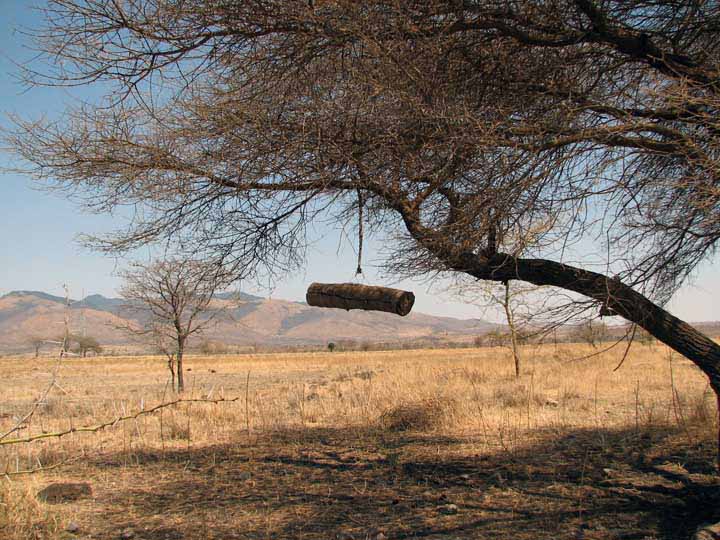
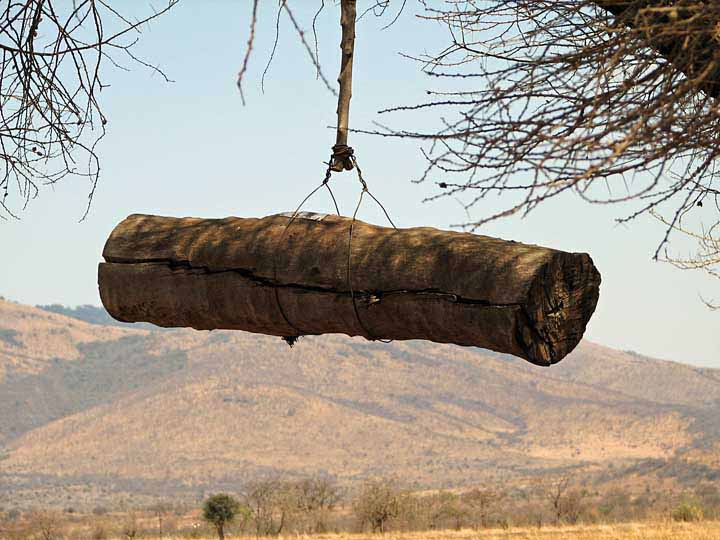
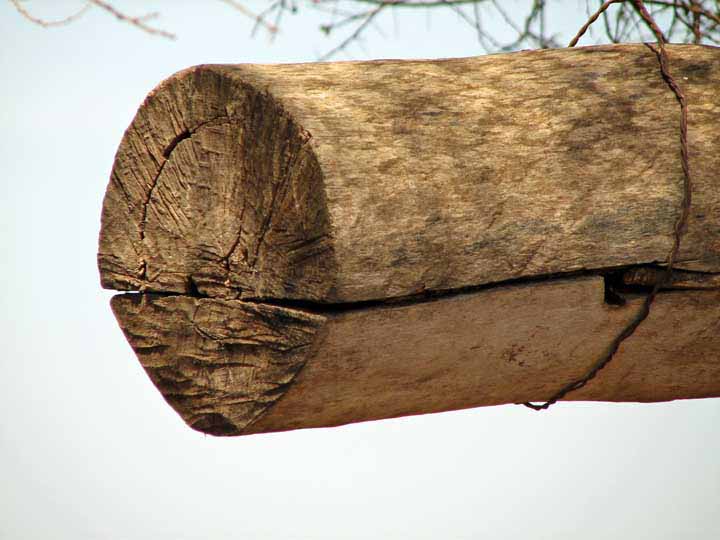
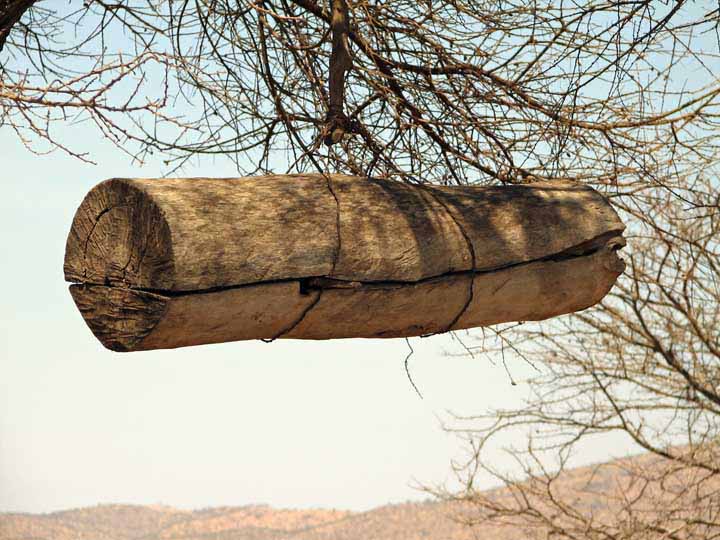
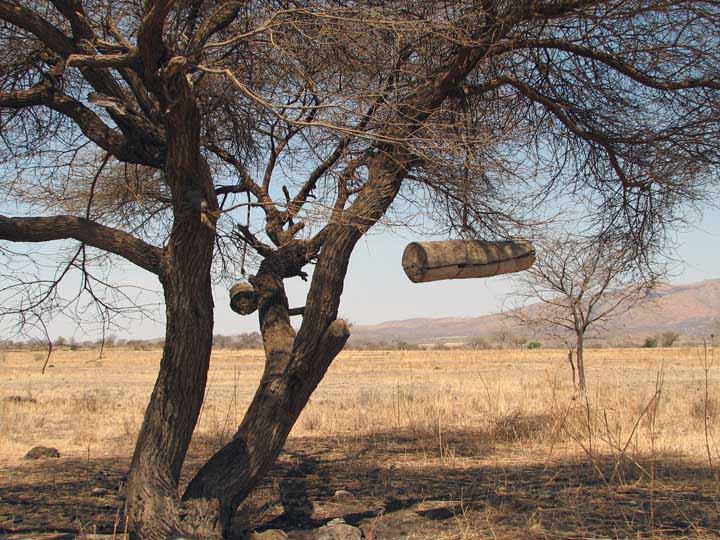
This is what I walked on to get to the bee hives.
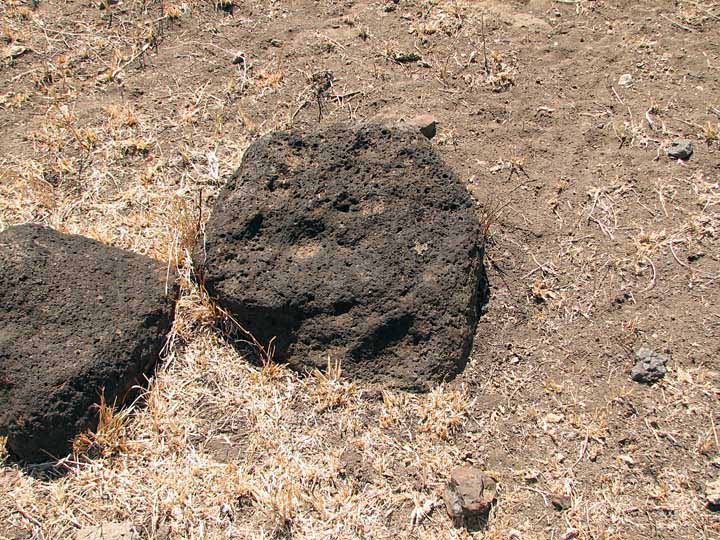
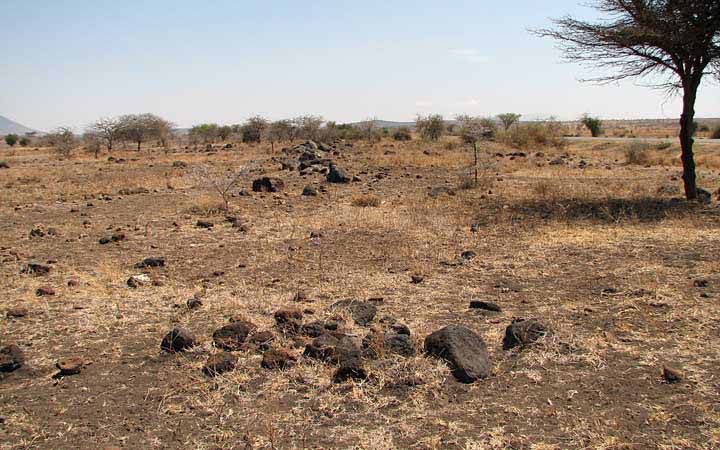
Water, water, no-where and not a drop to drink.
We simply don't appreciate our water resources! I know I've complained about having to drink bottled water everywhere we've travels other than Britain and Greece - but there was water!
Here all water seems to be carried for miles and miles by whatever means available.
Here a man has his mules loaded down and he carries an extra on his head.
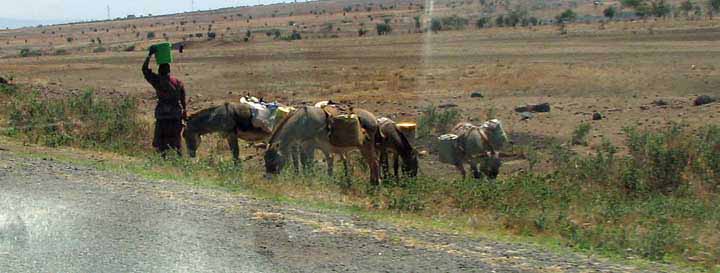
This bus is carrying as many water containers as passengers.
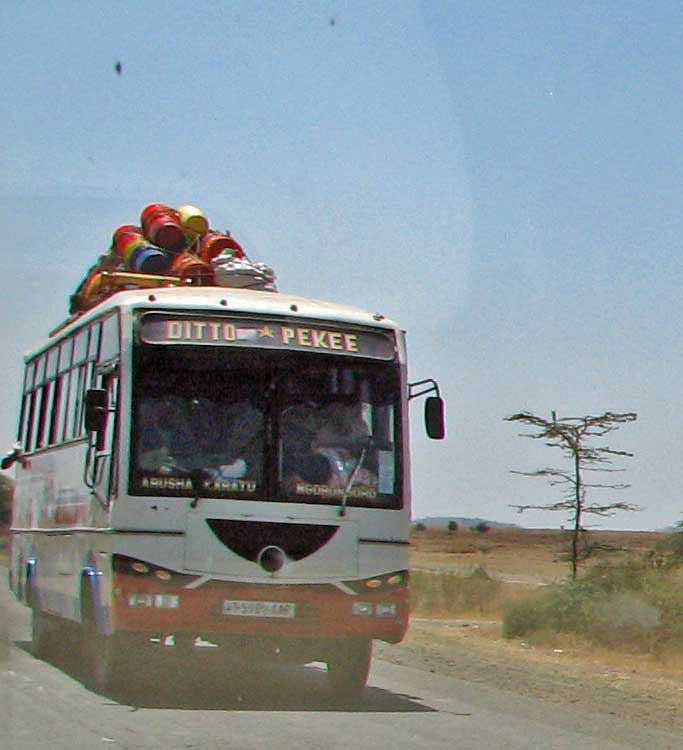
Mules piled high with water, and even more containers yet to be carried.
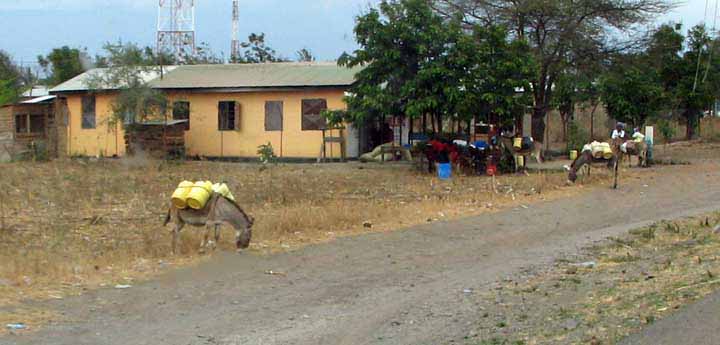
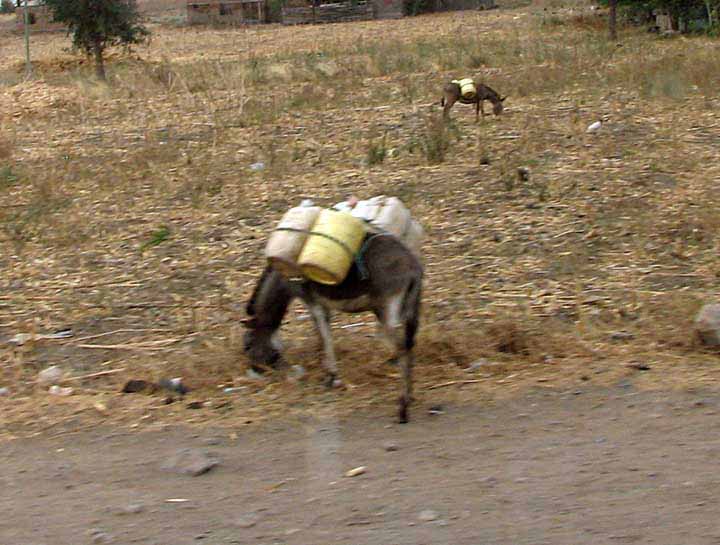
Both beasts of burden and their keeper are tired and rest in the shade.
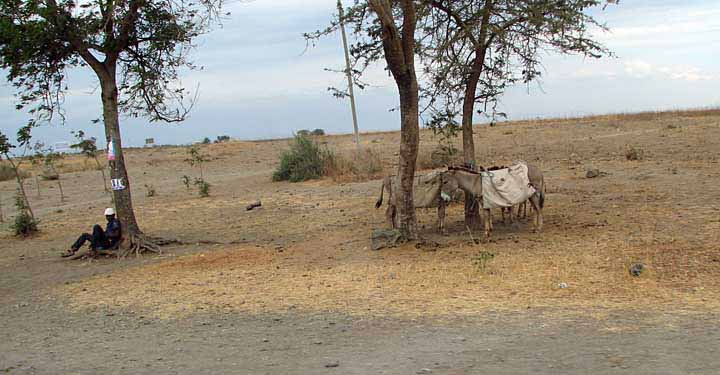
This poor woman is carrying 2 five gallon containers on her back.
How many miles has she walked?
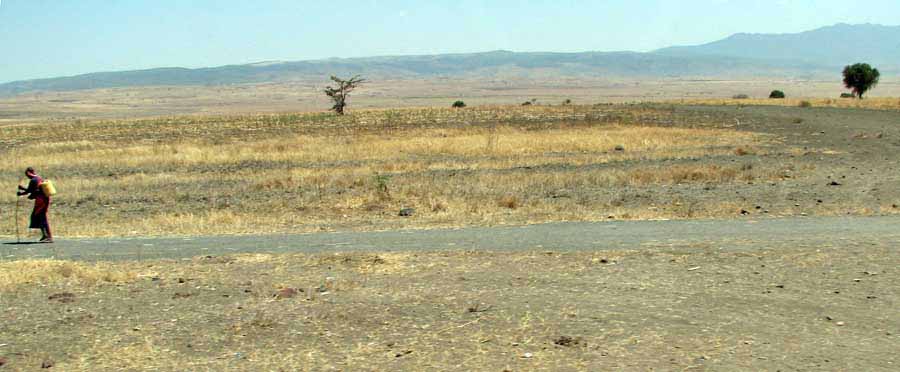
Water in the home made saddle bags

Just how much water can his overloaded bus carry?
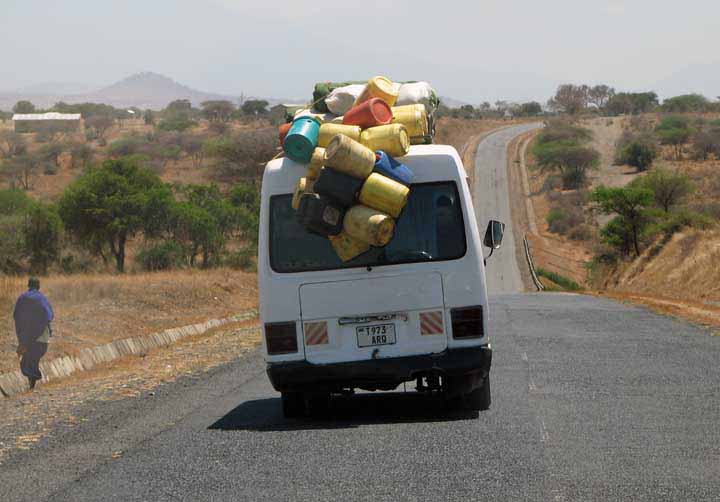
Cattle just walking stir up a cloud of dust in this dry country
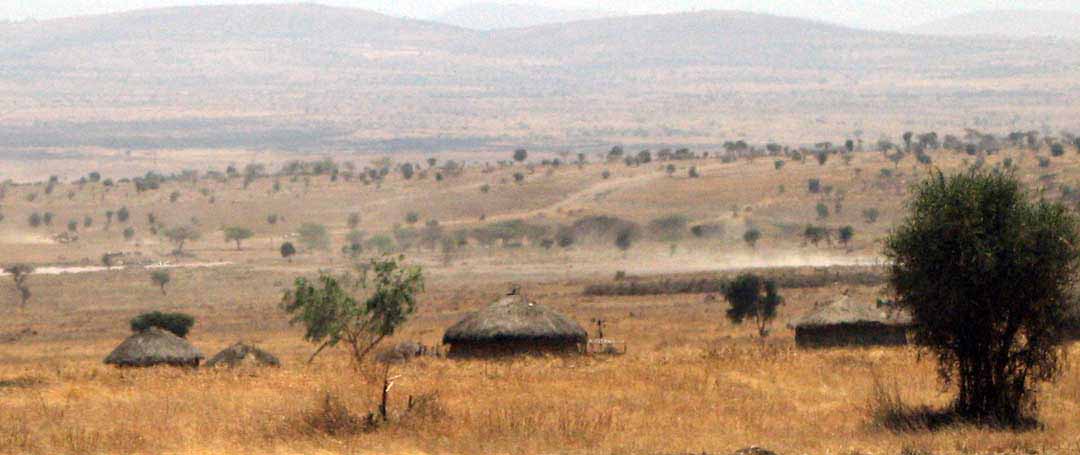
Just dry - how else to describe?
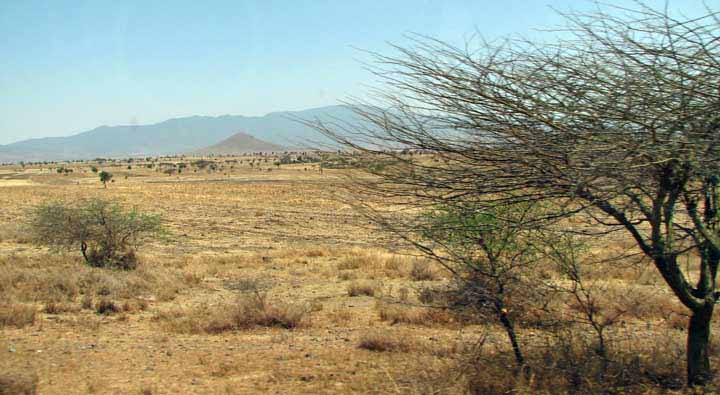
As the Samburu article in Time said:
Head north ... Once you pass the mountain and descend onto the dusty Samburu plain, however, the weather evaporates. The first town you reach is Archer's Post, a collection of dusty shacks around a truck stop... says elder Leadisimo Lehgalee, 69, the Samburu are forced to watch the daily deluge over Mount Kenya while enduring a drought on their land that began in I997. Inevitably, jealousy and desperation turn to enmity... "That's the Samburu life."
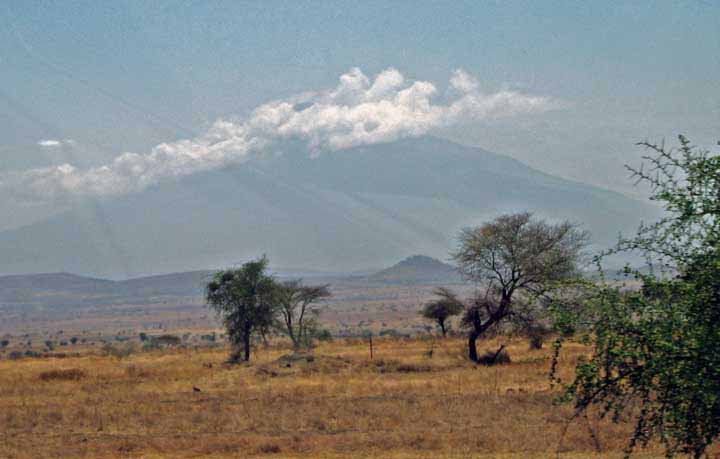
A solution?
These are called Political Camels - pushed upon some tribes village by the Tanzanian Government
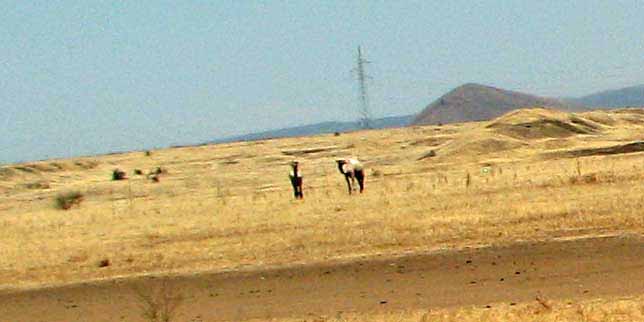
OK, I can't pass up pictures of cat / kittens in any country
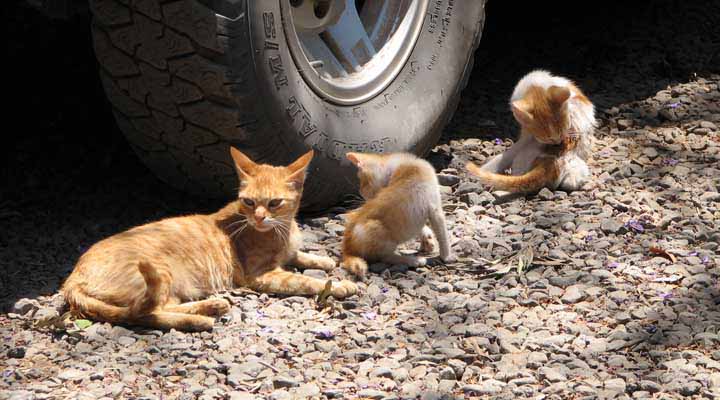
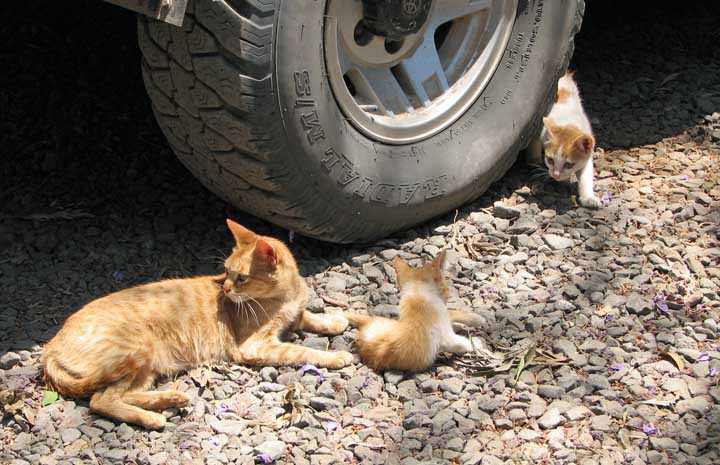
A heavy load on a dusty road
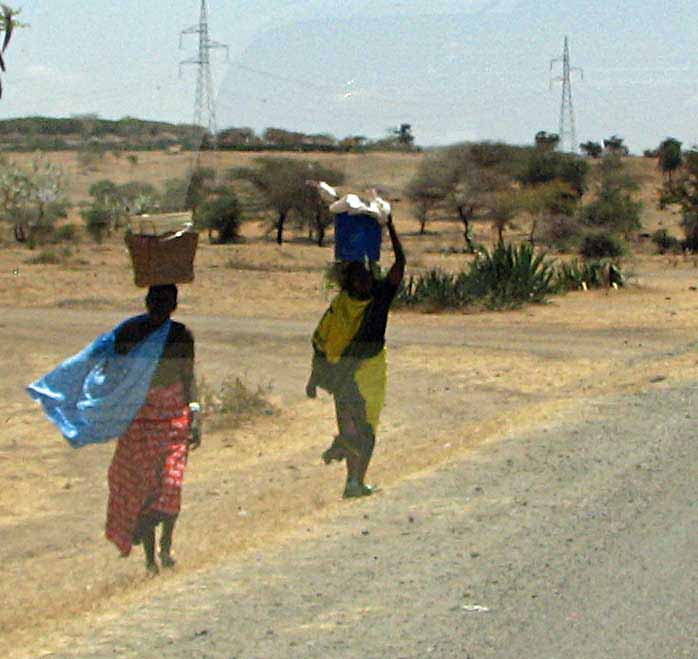
Too many shots of Mount Meru as we go down the road
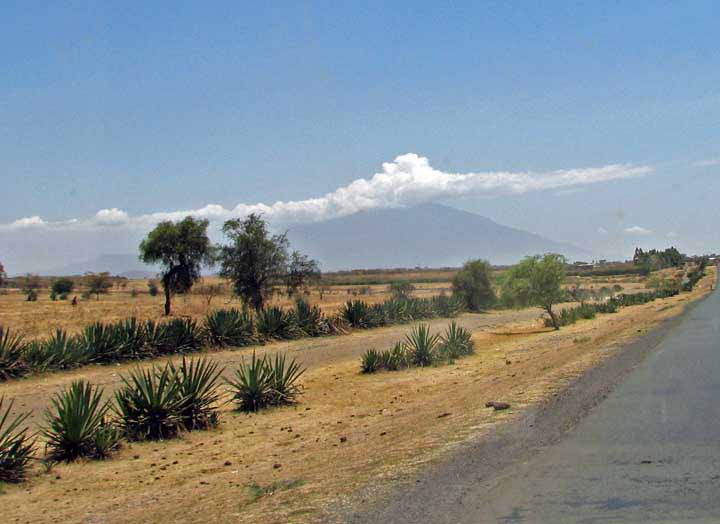
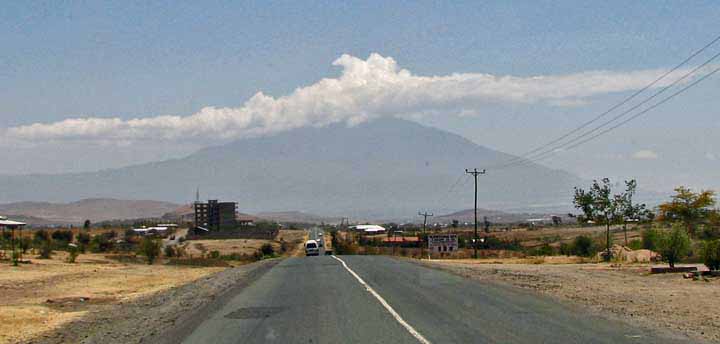
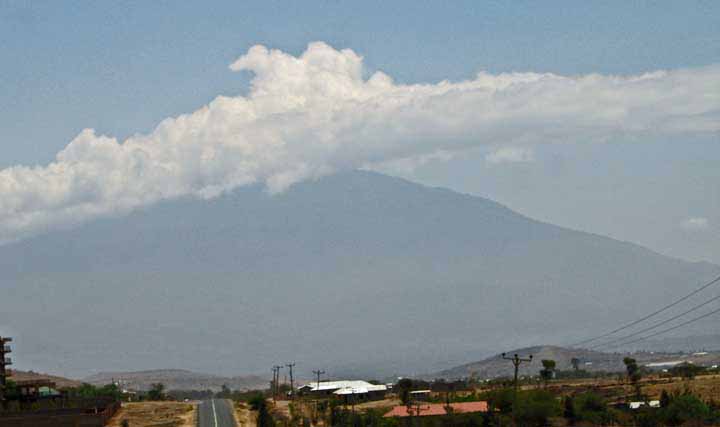
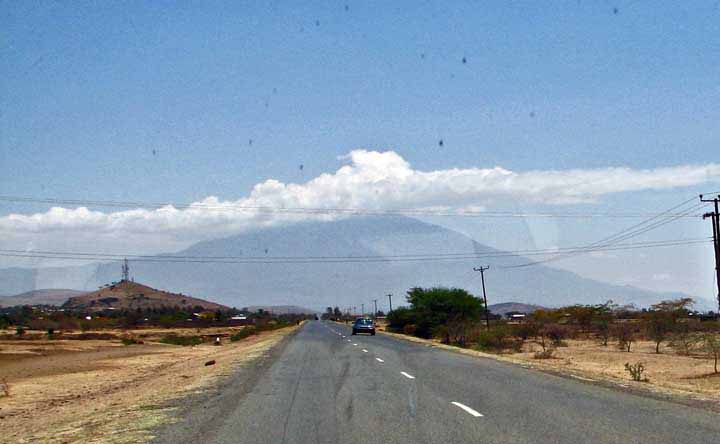
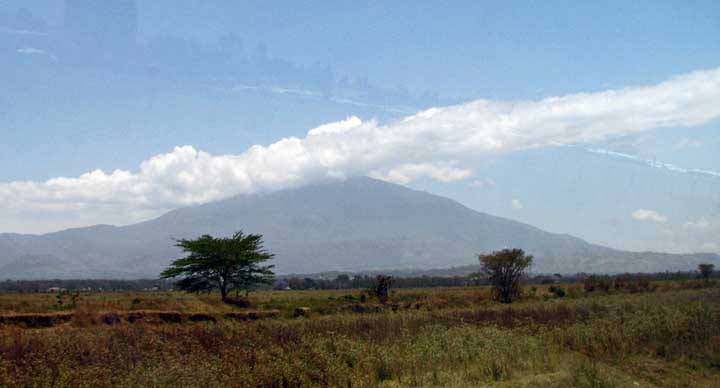
Never fear, you can always get a wireless signal in Tanzania - and in Kenya for that matter. There was nowhere that we saw either Hodge or Samuel fail to have a call go through.
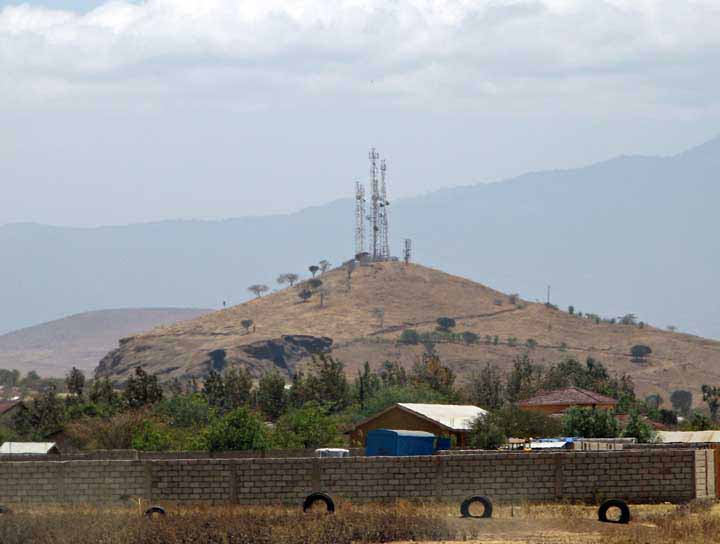
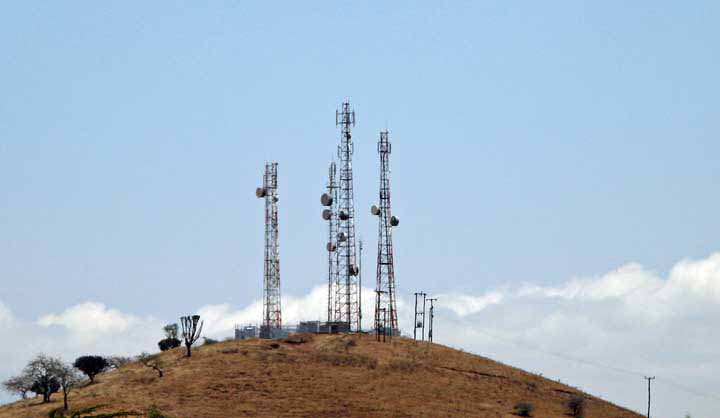
We were warned that it is election time in Tanzania and to avoid any involvement
Samuel told us which flags and which colors stood for the different parties.
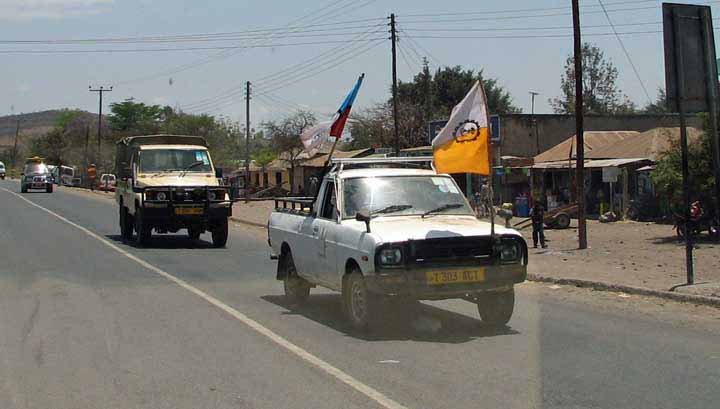
Several times in towns we ran into political vehicles with their loud speakers blaring,
flags waving and people calling out .
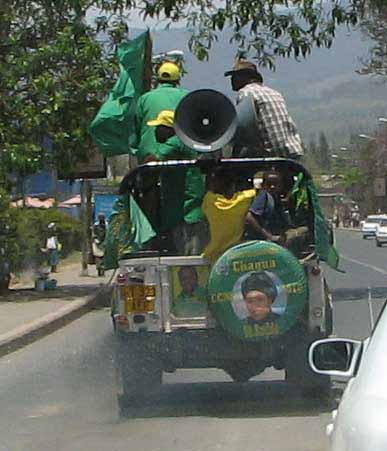
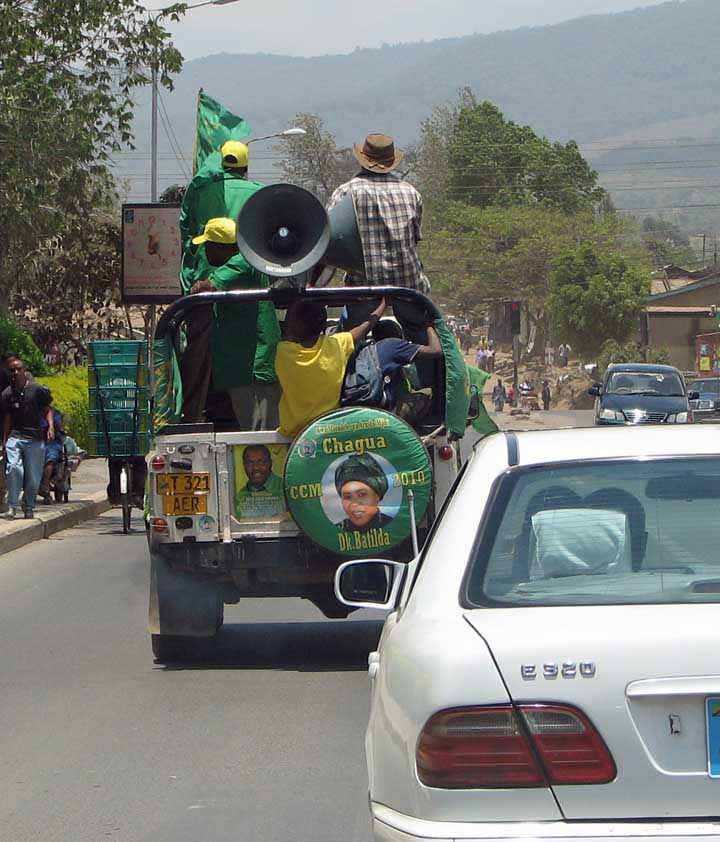
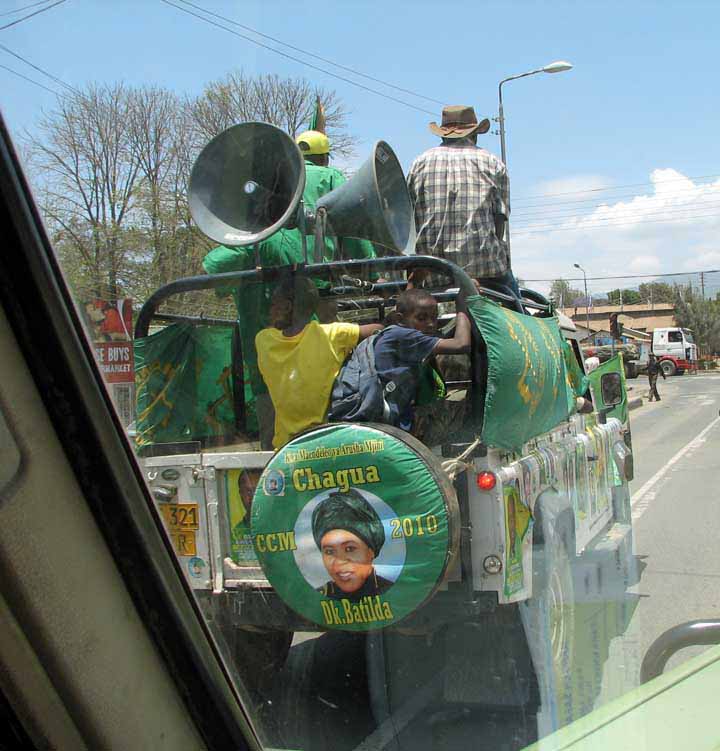
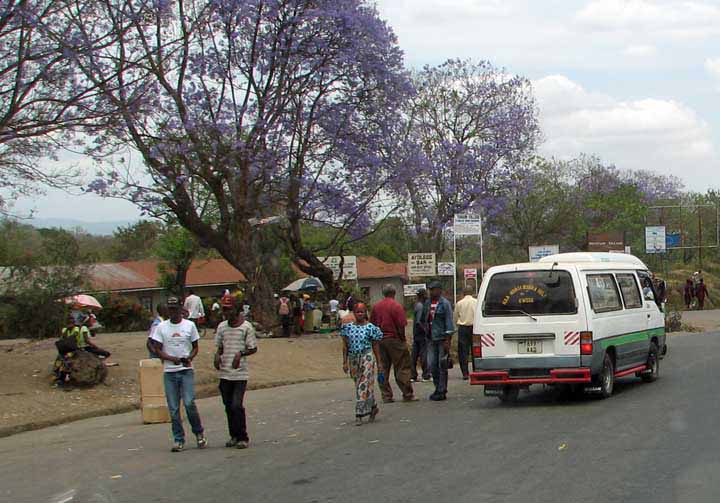
But, regardless of the politics, it appears the people remain poor
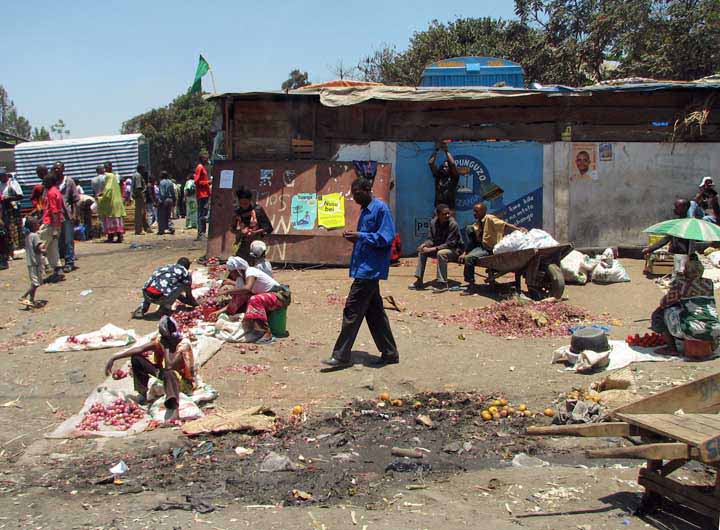
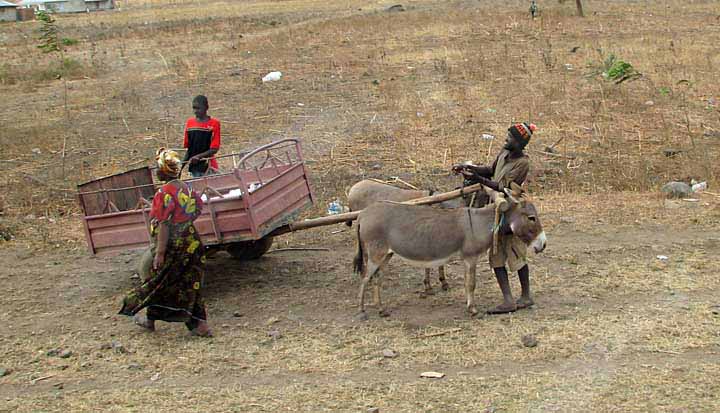
We stopped at a lodge in the city for lunch - obviously run by the Serena Lodges group
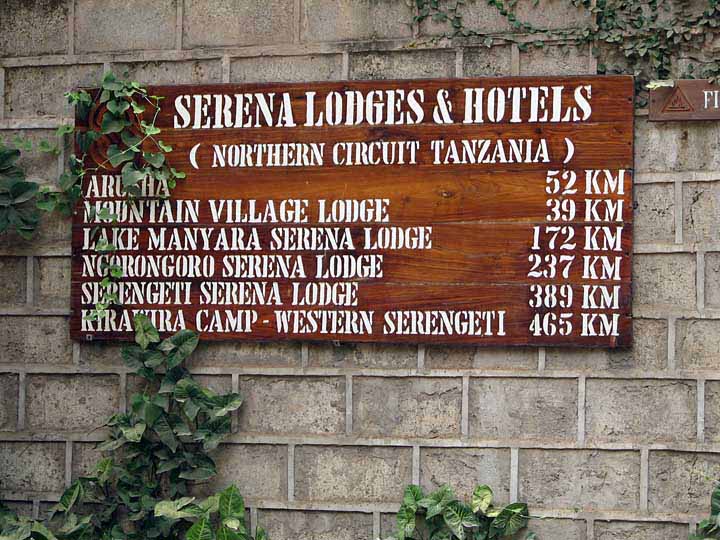
Coffee plants and coffee beans
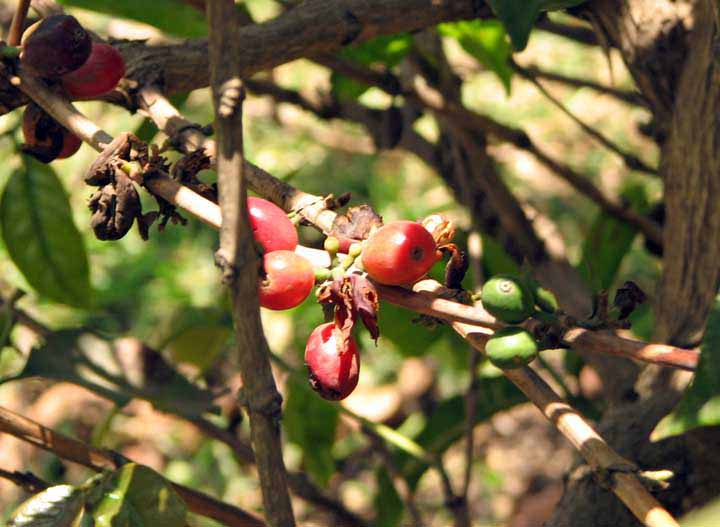
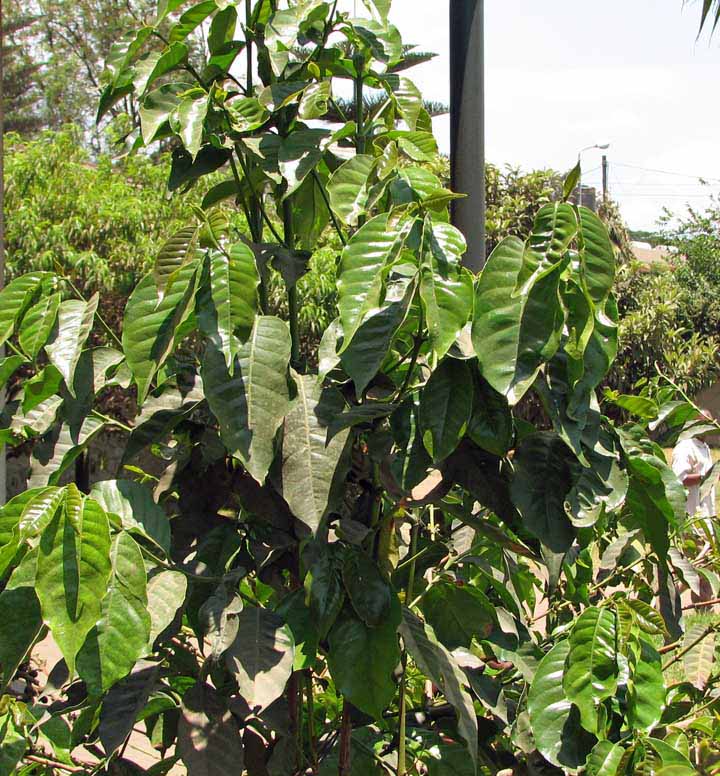
Trees, plans and flowers seen after lunch
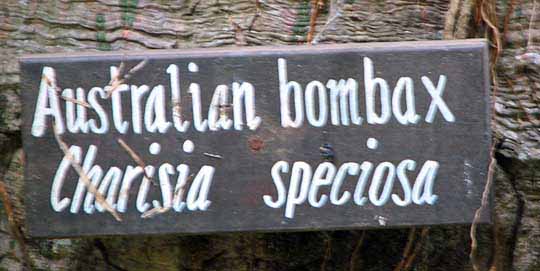
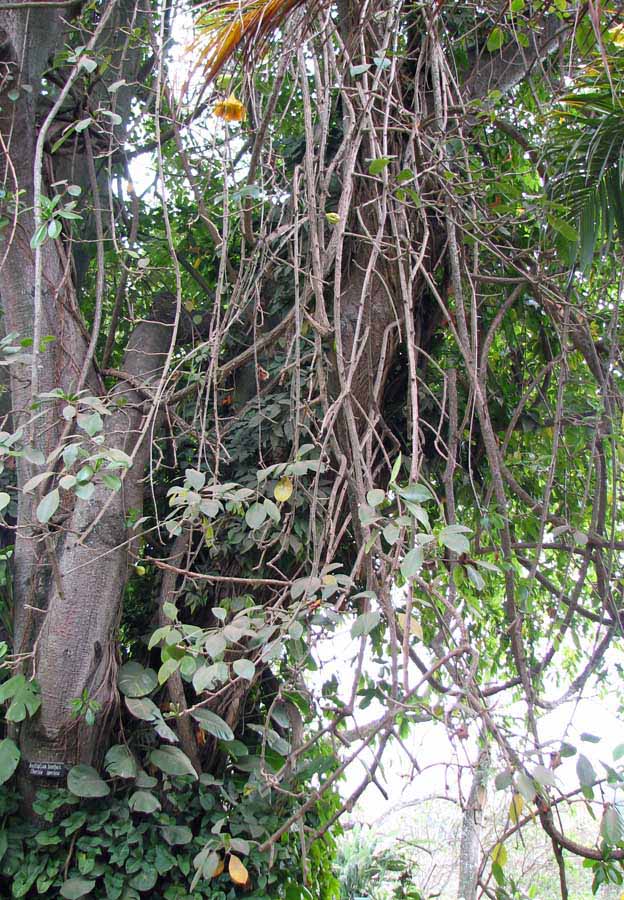
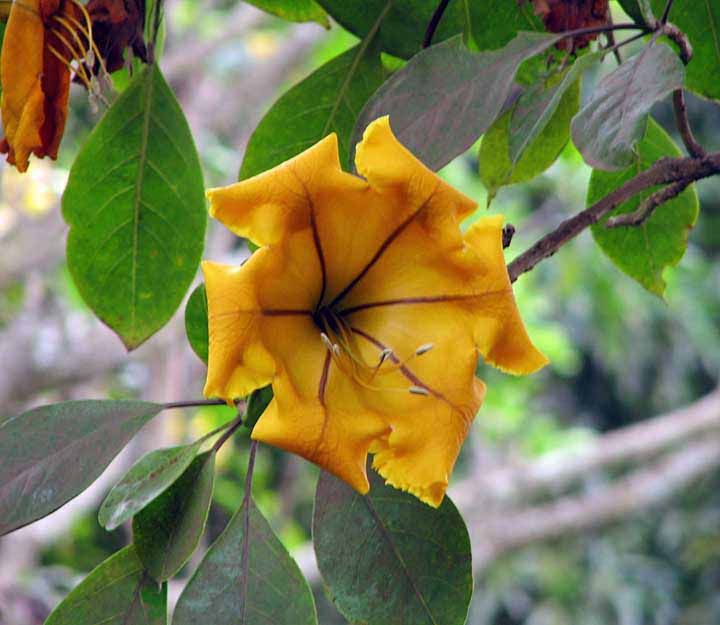
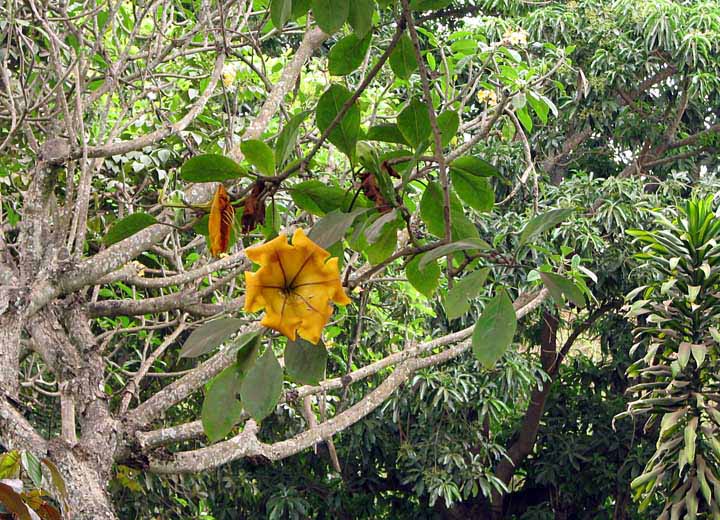
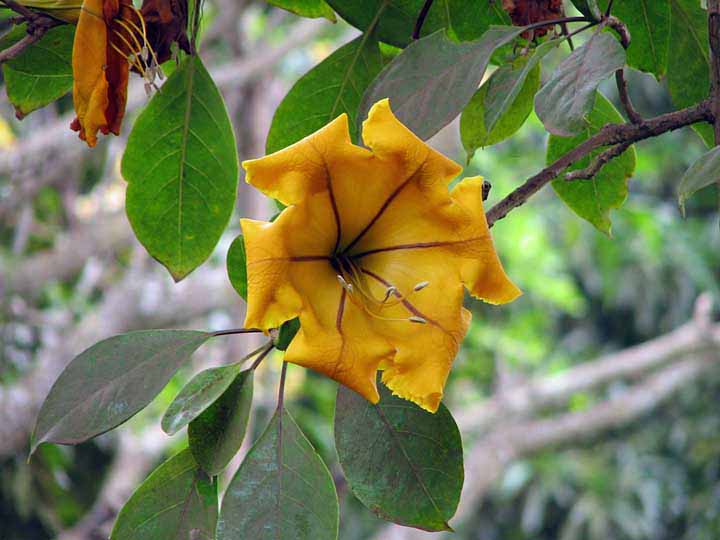
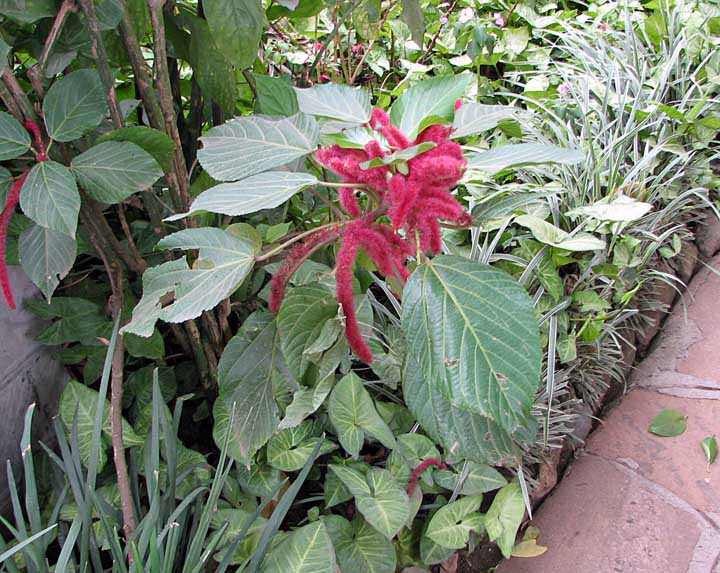
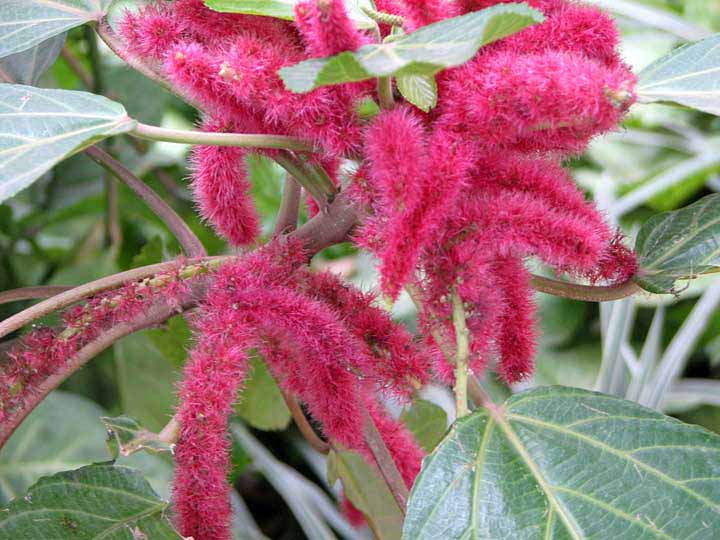
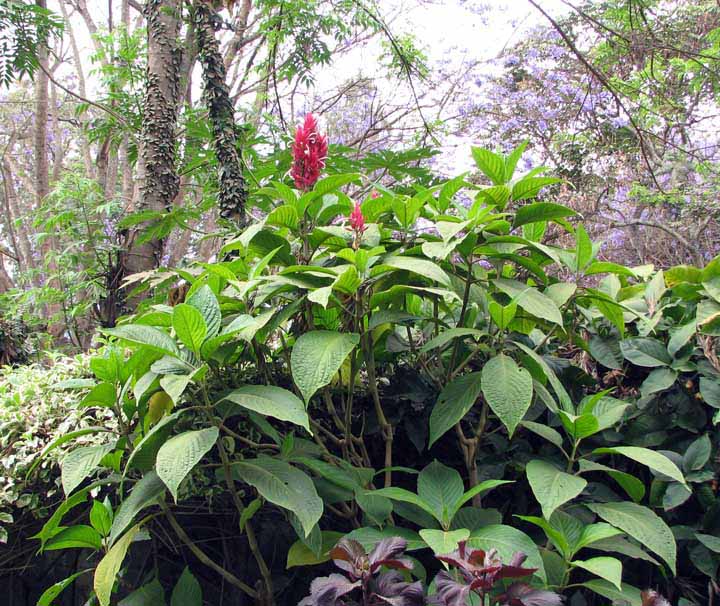
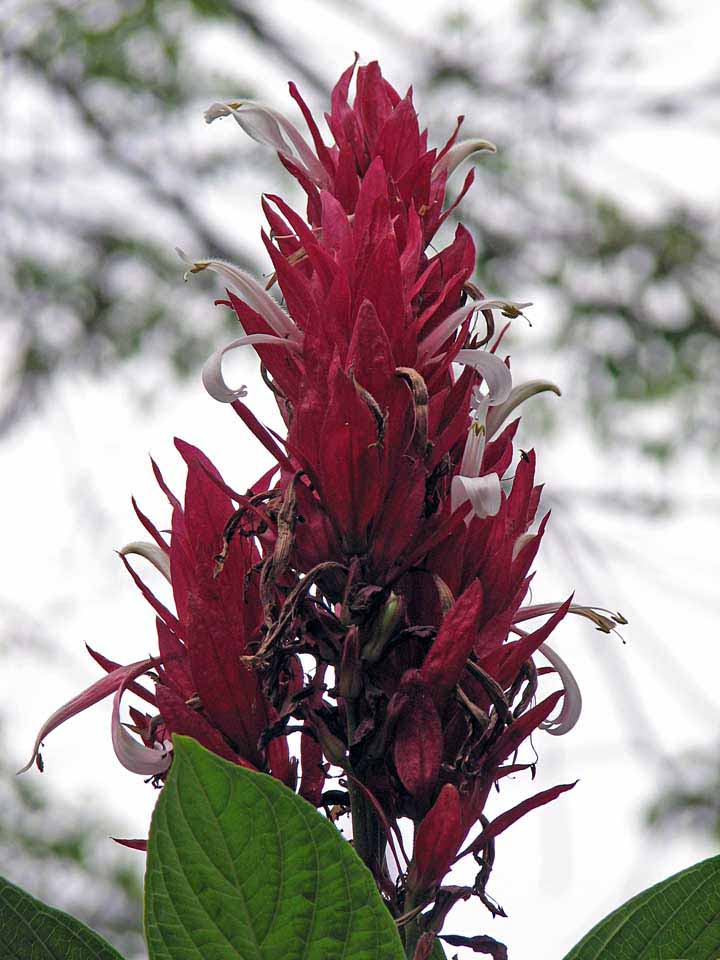
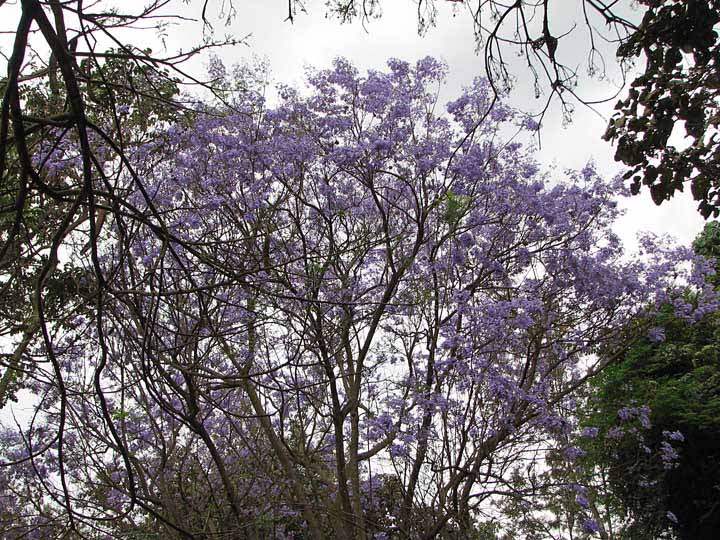
The road to the airport - plane jitters already!
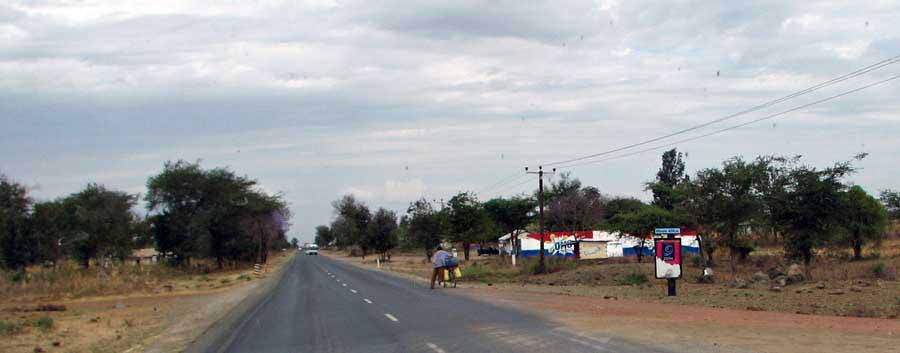
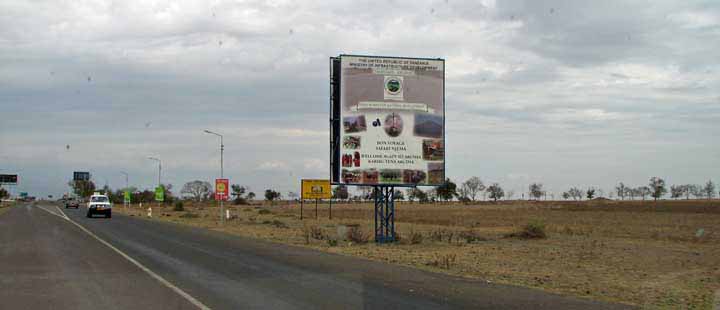
Leaving Tanzania with fond memories and a desire to come back with family
~ ~ ~ ~ ~ ~ ~ ~ ~ ~ ~ ~ ~ ~ ~ ~ ~ ~ ~ ~ ~ ~ ~ ~ ~ ~ ~ ~ ~ ~ ~~ ~ ~